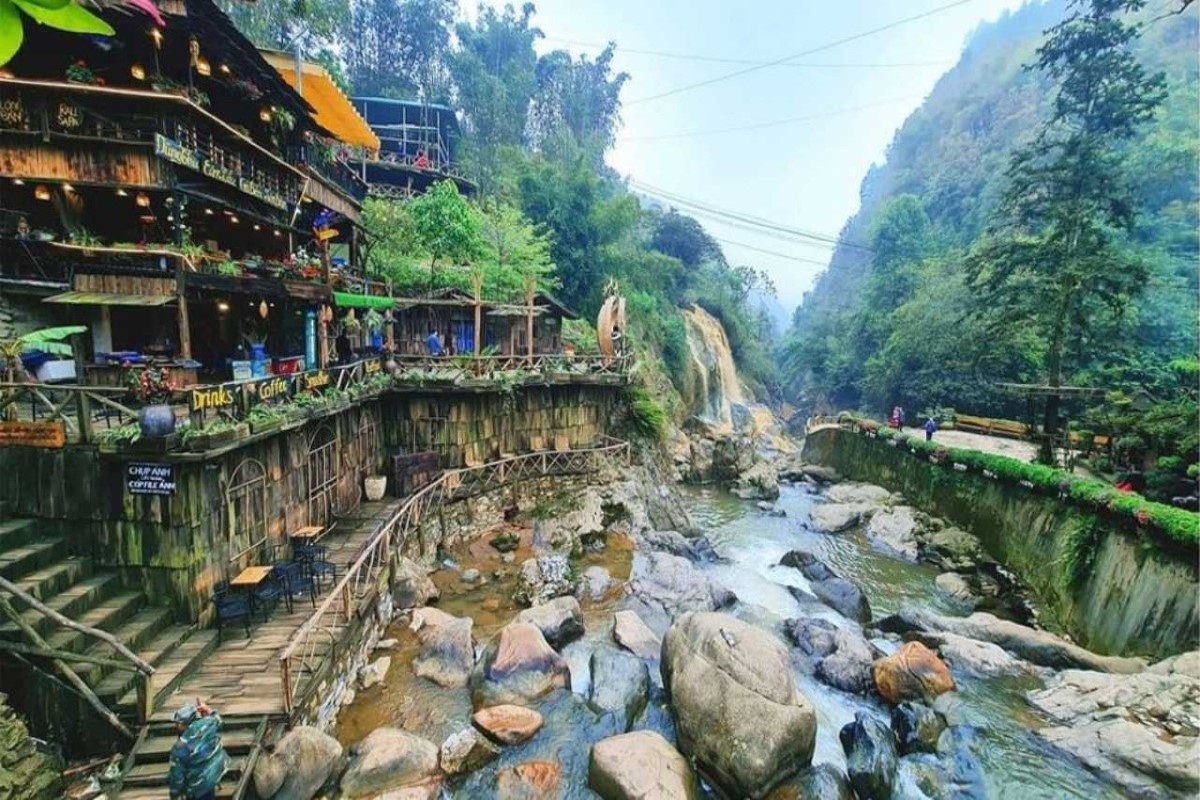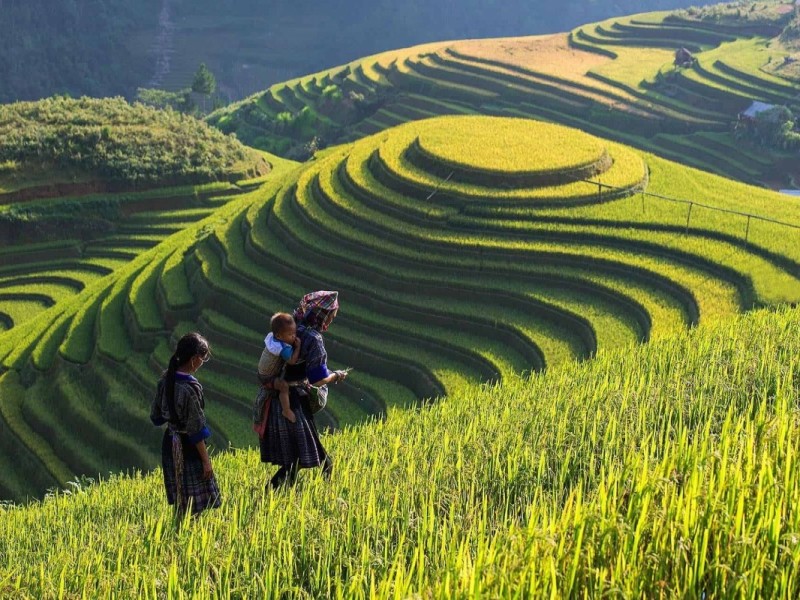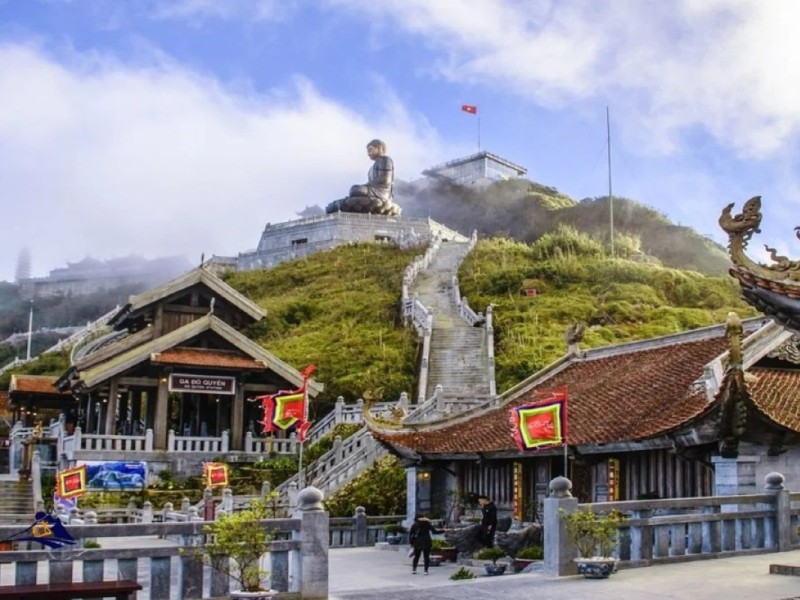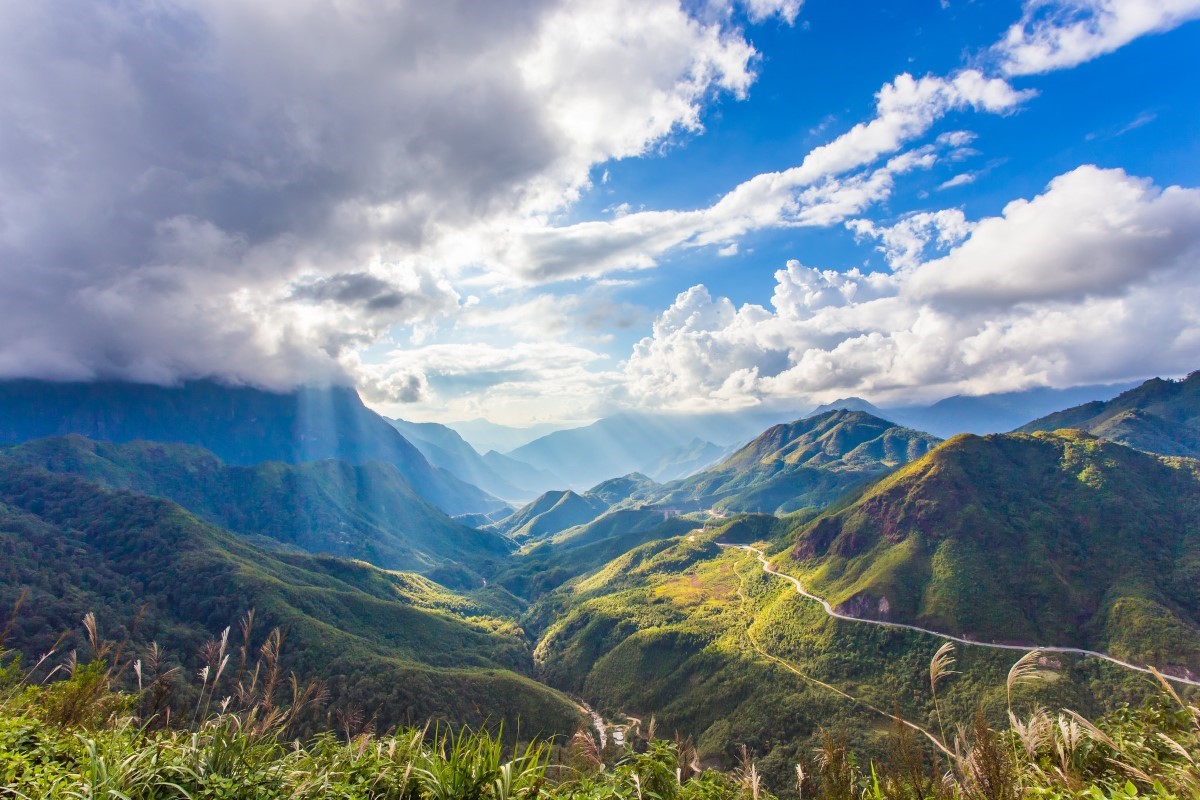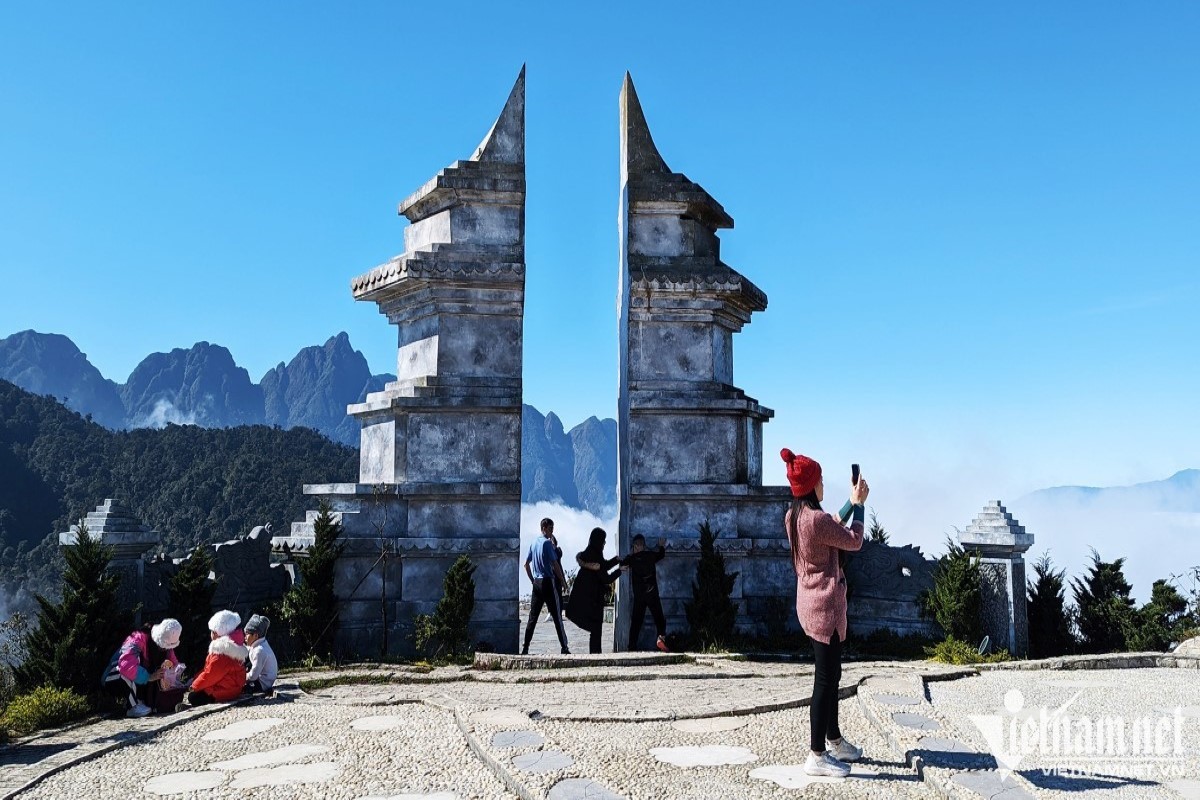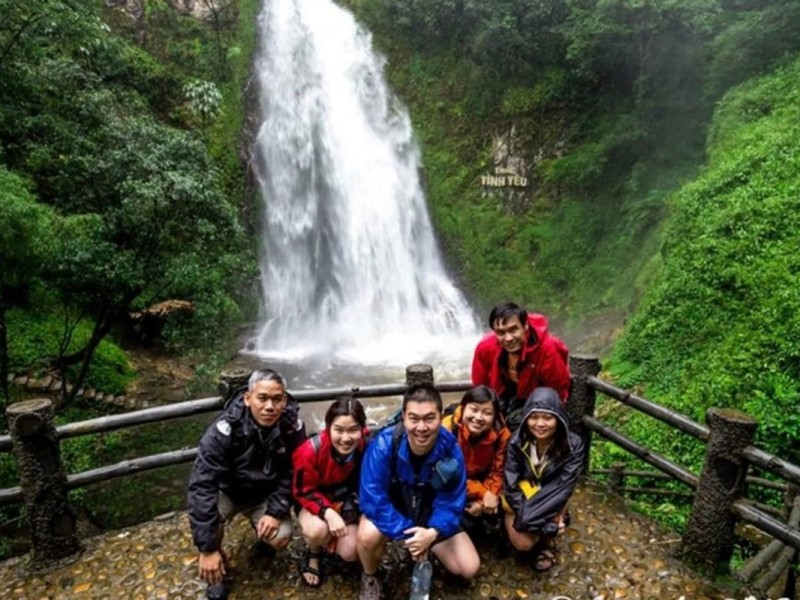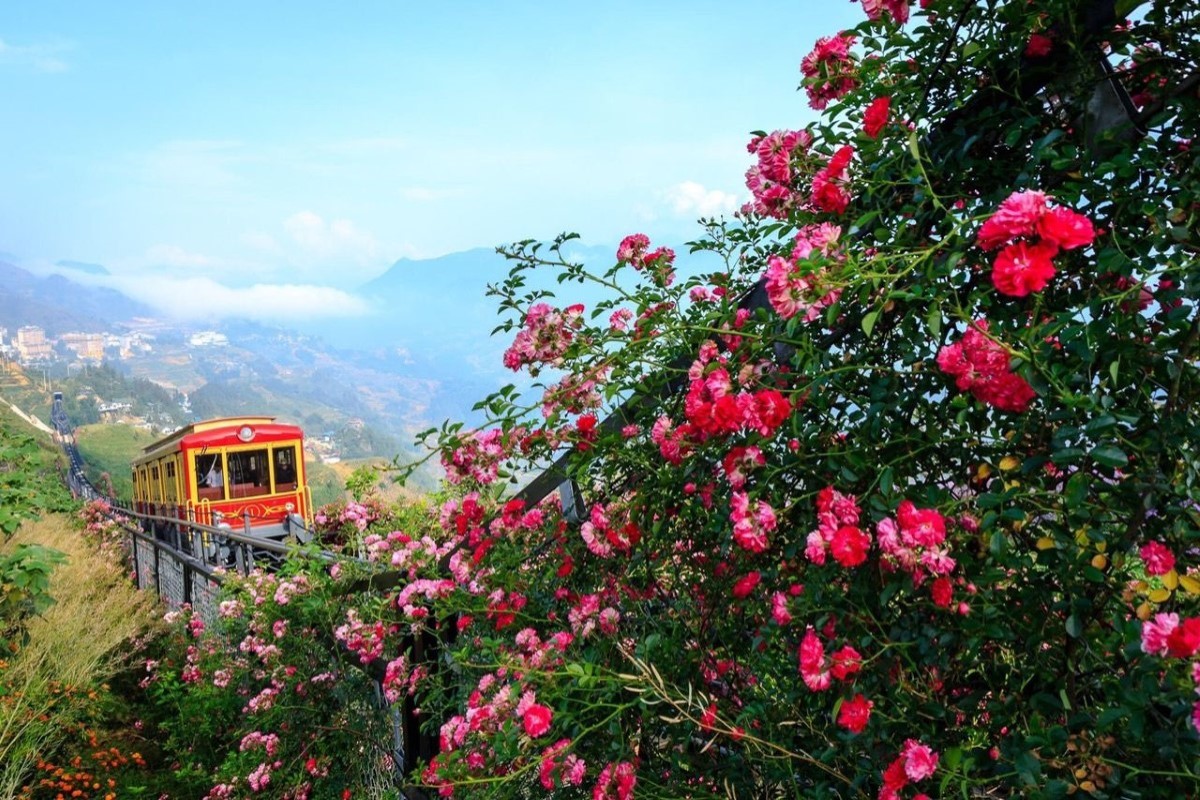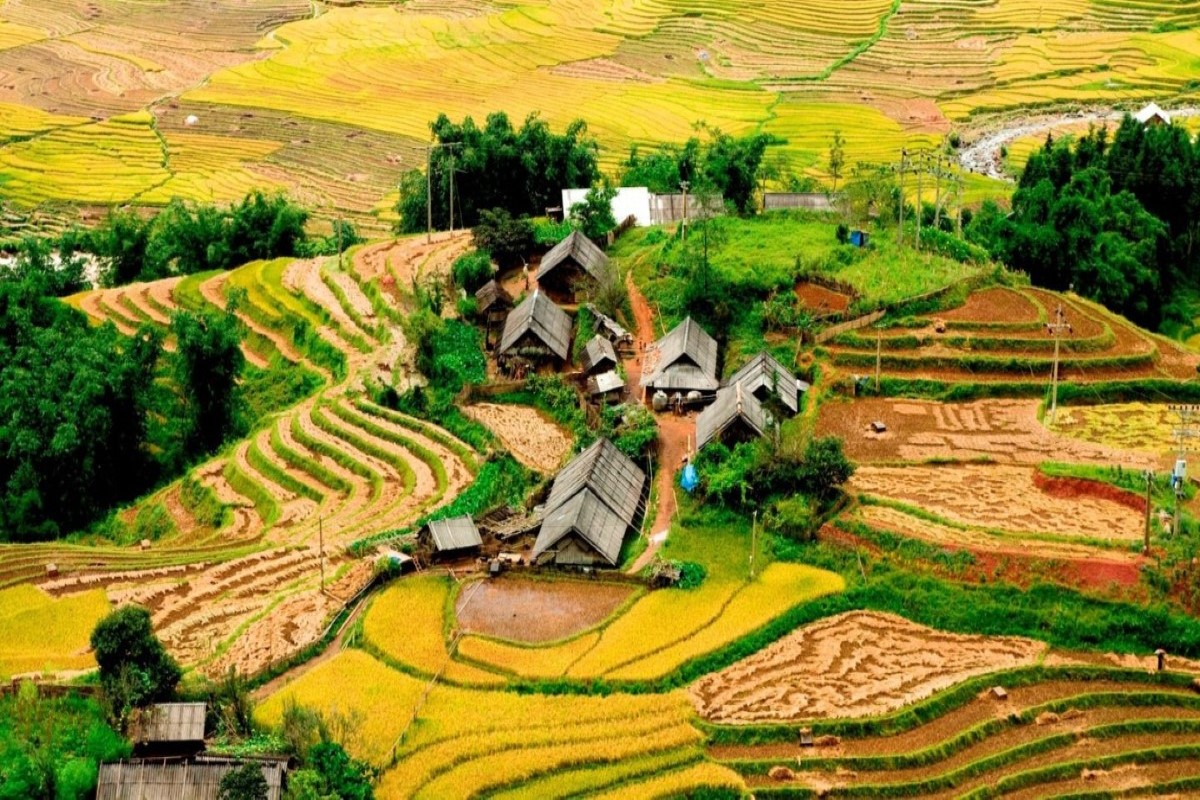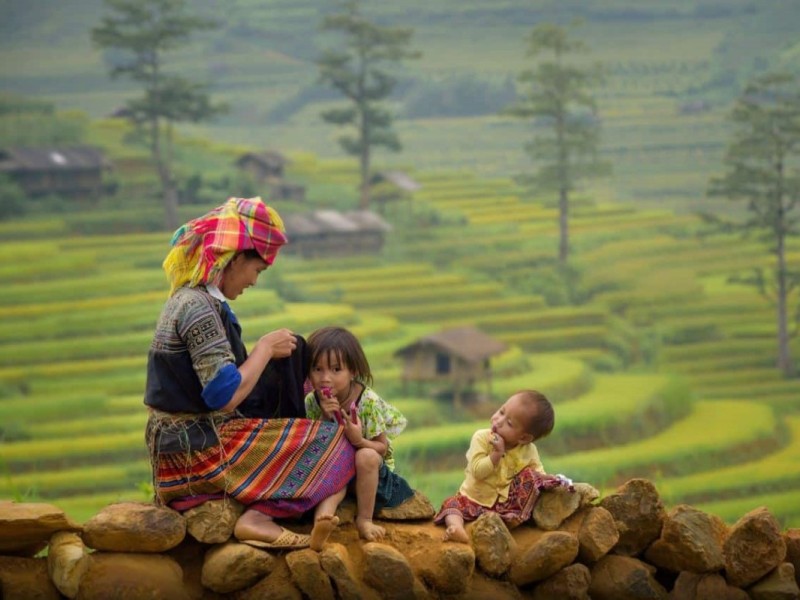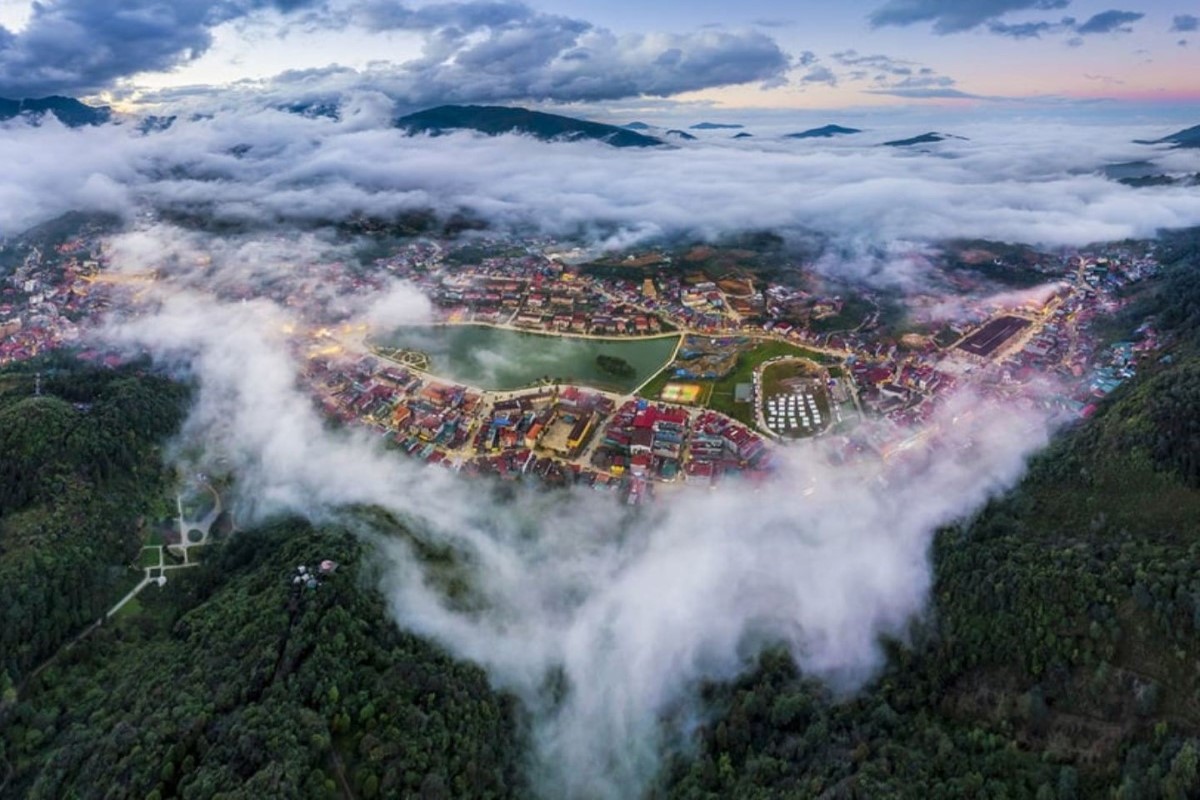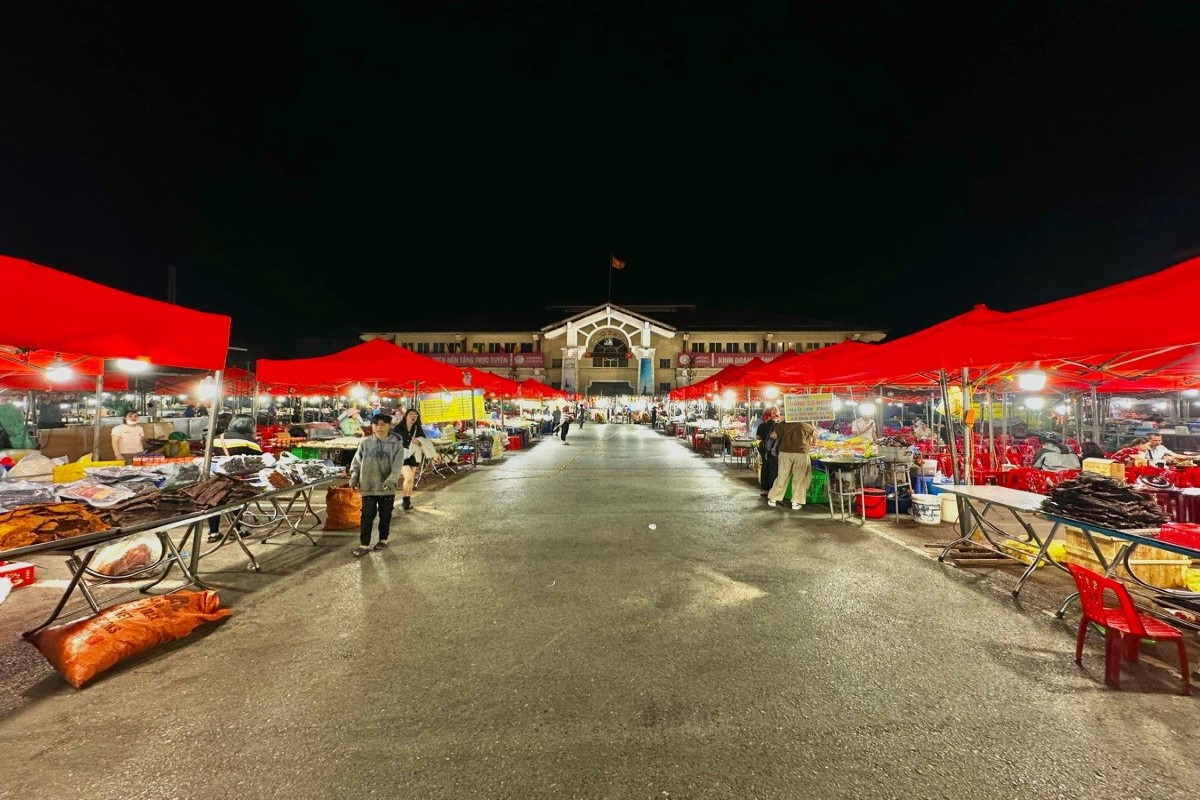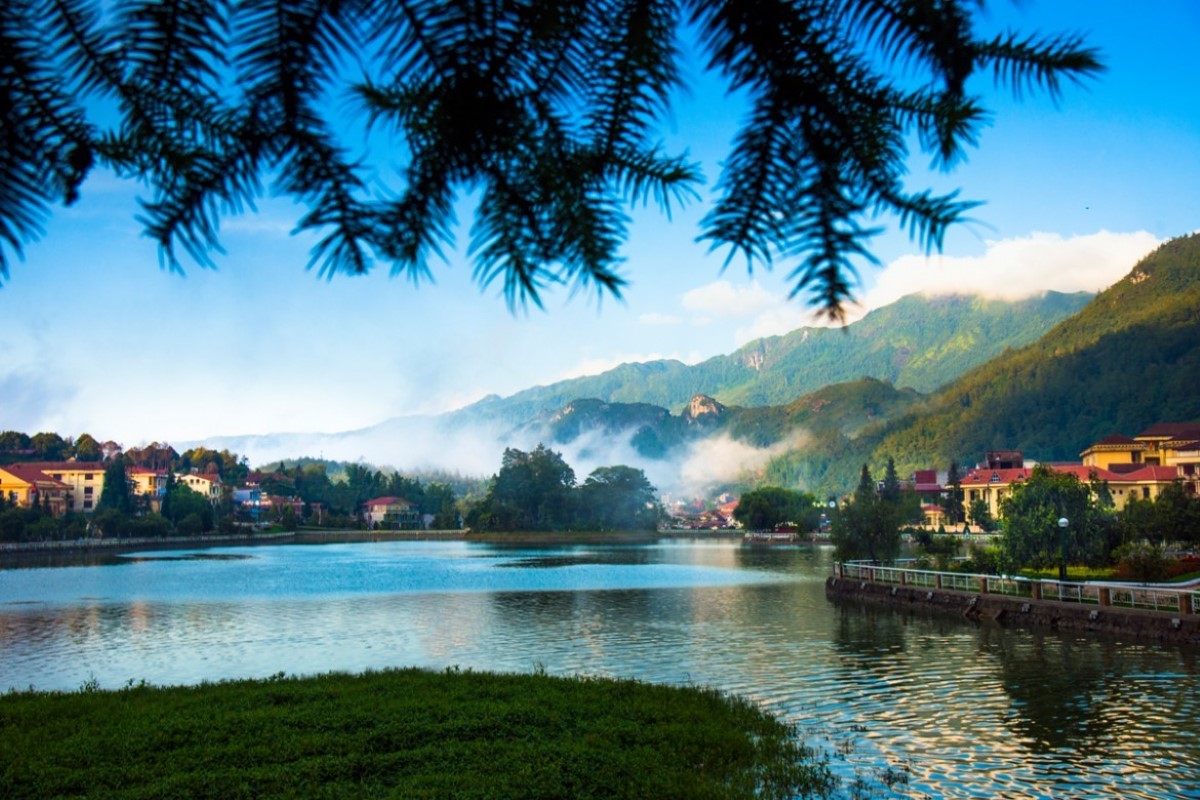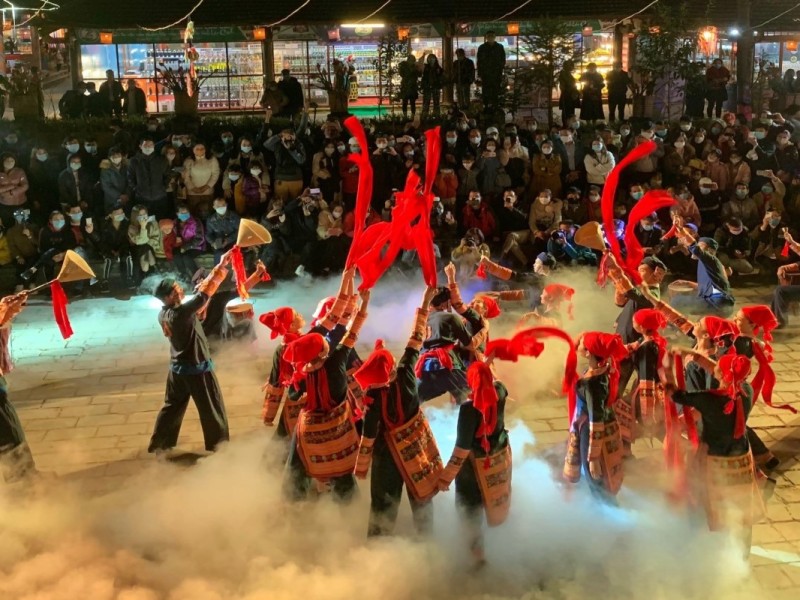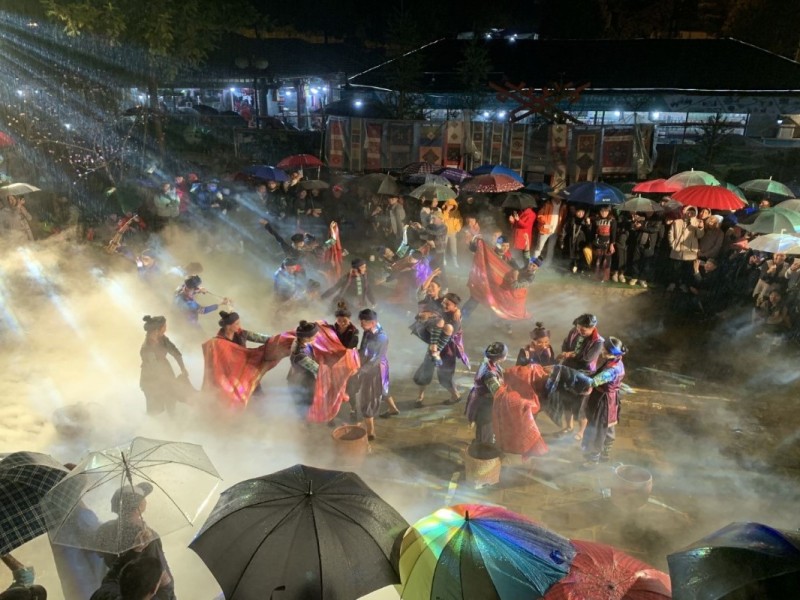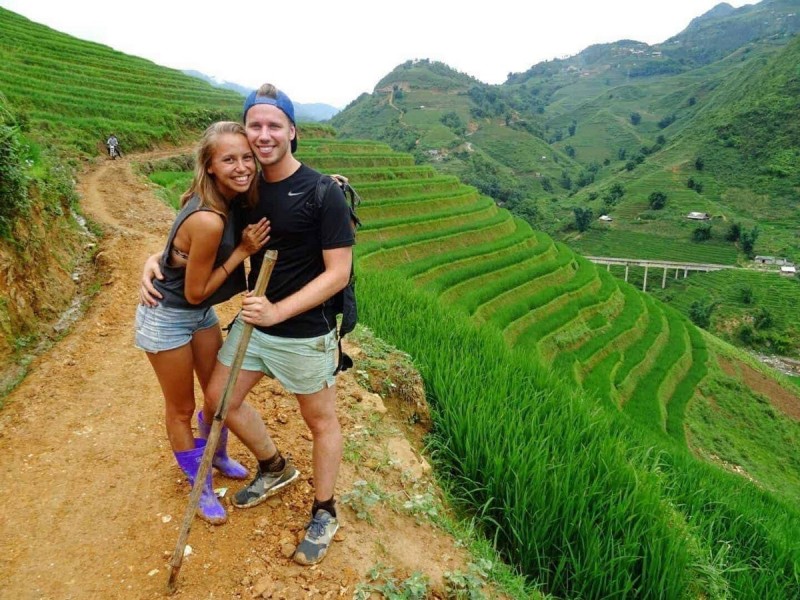Ta Van Village Sapa: Complete Travel Guide, Activities & Visitor Tips
Ta Van Village Sapa is a picturesque ethnic village nestled in Vietnam’s northern mountains, offering travelers authentic homestay experiences, scenic trekking routes, and unique cultural immersion. Visitors enjoy stunning rice terraces, friendly local communities, and traditional cuisine, making Ta Van a top choice for exploring the real Sapa.
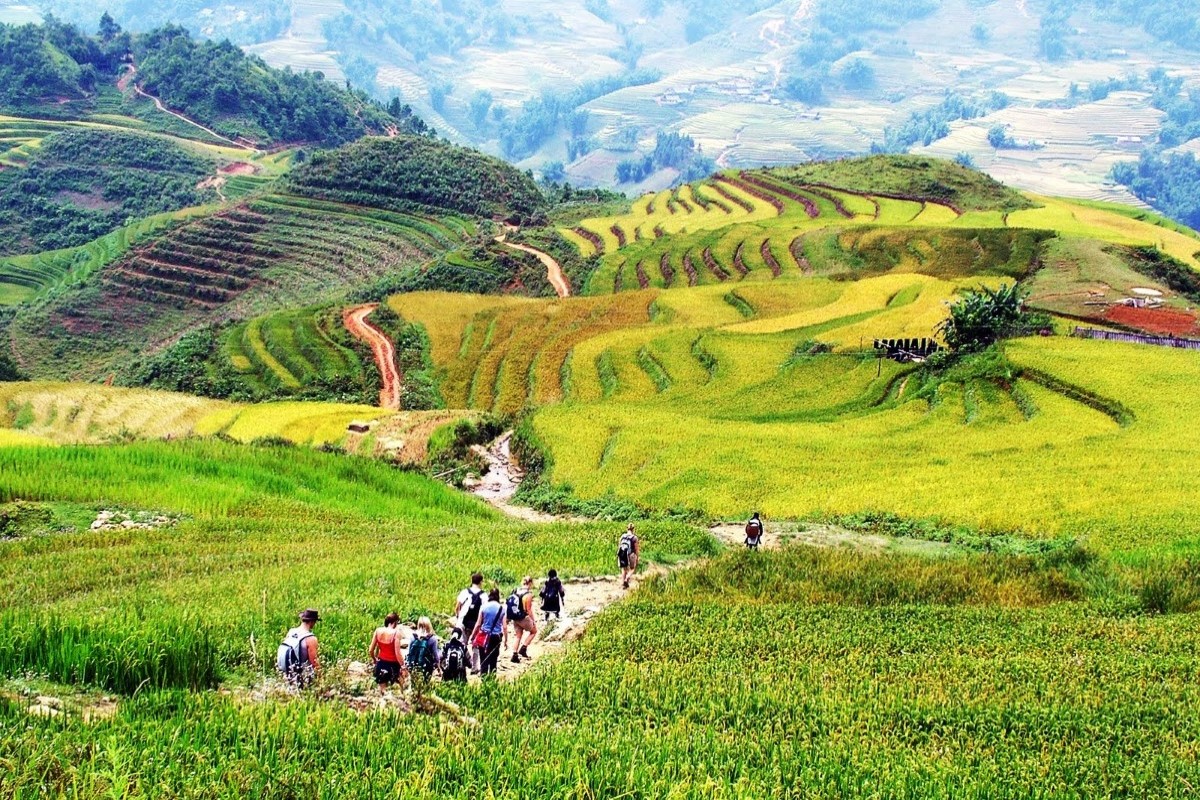
Welcome to Ta Van Village – Your Gateway to Authentic Sapa
Nestled deep in the lush hills outside Sapa, Ta Van Village Sapa welcomes you with a sense of calm and a promise of something real. This is not the crowded, commercial side of the region—instead, you’ll discover a world shaped by tradition, nature, and genuine warmth. For travelers seeking an authentic Sapa experience, Ta Van stands out as a peaceful escape. Picture gentle morning mists drifting over terraced fields, the soft sounds of village life, and a daily rhythm shaped by generations of local families. If you’re dreaming of cultural immersion and a slower, more meaningful connection to northern Vietnam, you’ll find it here. Step off the main track and begin your journey into the heart of Sapa’s rural spirit—where every moment invites you to be a part of something timeless.
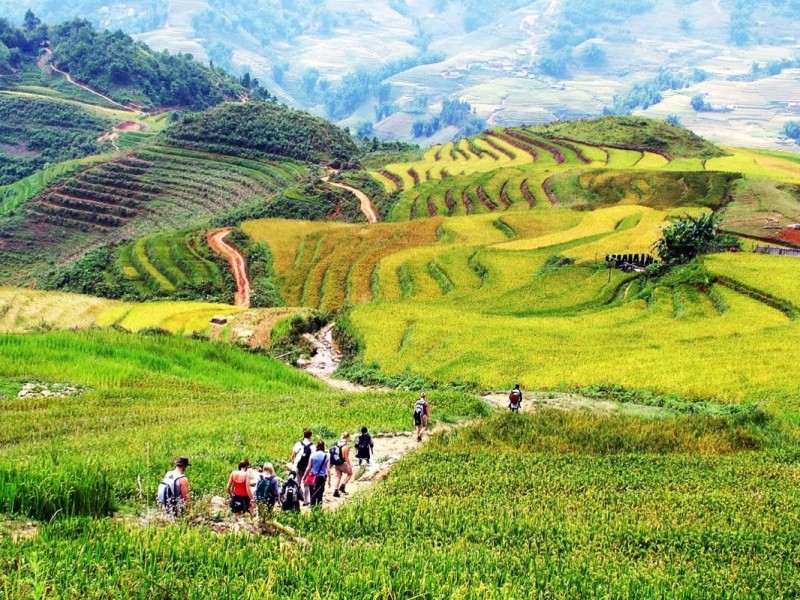
What Makes Ta Van Village So Special?
Ta Van Village Sapa has a rare ability to slow you down and open your eyes. Right away, you sense this is the gateway to an authentic Sapa experience—a place where ancient customs are part of everyday life, not just a show for tourists. Unlike the bustling streets of Sapa Town, here you’re surrounded by quiet paths, fields alive with color, and people who greet you like an old friend. If you crave village trekking Sapa-style or want to simply soak in the tranquil atmosphere, Ta Van offers a powerful mix of cultural immersion and peaceful scenery. Every smile, every story shared by locals reminds you: this is a community proud of its roots and eager to share it all with visitors.
A blend of ethnic cultures and stunning landscapes
The true heart of Ta Van Village Sapa lies in its people and the land they call home. Here, the Giay, Hmong, and Red Dao communities live side by side, each adding their own unique colors and rhythms to village life. Their traditions—from the bold patterns of traditional attire to the distinct languages spoken on the village paths—blend seamlessly with the scenery. All around, you’ll see sweeping views of terraced rice fields stretching into the distance, with the famous Muong Hoa Valley unfolding beneath layers of mist and sunlight. It’s a place where ethnic minority traditions thrive, where the landscape itself tells a story of resilience and beauty.
Friendly local communities and unique traditions
Life in Ta Van Village Sapa is built on hospitality and shared traditions. Visitors often find themselves welcomed into daily routines—whether it’s a morning meal, an afternoon chat, or joining in a family celebration. The sense of friendly local traditions is everywhere, from market visits to simple greetings as you stroll narrow village lanes. In rural Vietnam, authenticity means the smiles are real, the invitations are genuine, and every interaction adds something new to your journey. If you’re searching for an authentic local experience rooted in hospitality and cultural heritage, Ta Van’s unique traditions will stay with you long after you leave.
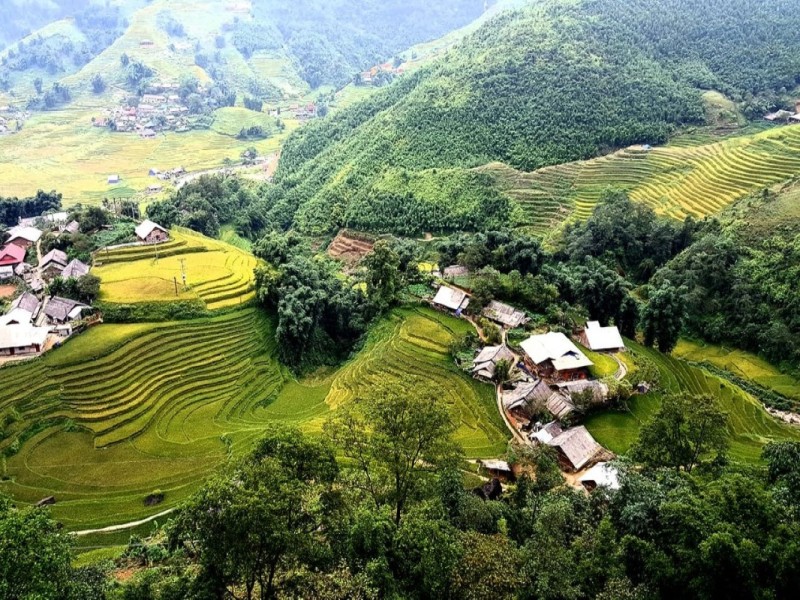
Where Is Ta Van Village? Getting to Know Its Location
Ta Van Village Sapa sits quietly in the heart of northern Vietnam’s mountains, forming a key part of the broader Sapa region. If you’re searching for directions to Ta Van Village Sapa, the village is located about 10 kilometers southeast of the main town of Sapa. Its location in Sapa’s famed Muong Hoa Valley makes it both accessible and naturally scenic, surrounded by rice terraces and linked to other trekking circuit villages. This regional context places Ta Van on the popular Sapa trekking circuit, making it an ideal stop for those planning multi-day hikes or looking for an immersive, off-the-beaten-path travel experience.
Map and directions from Sapa Town
Reaching Ta Van Village Sapa is an adventure in itself, offering several options that let you experience the landscape at your own pace. Knowing your choices in advance ensures your journey starts smoothly and sets the tone for an unforgettable stay.
• By car or taxi:
- Fastest and most comfortable, taking 30–40 minutes from Sapa Town
- Expect winding mountain roads with scenic views throughout
- Taxis can be hired in the town center; negotiate fare beforehand
• By motorbike:
- Ideal for independent travelers wanting freedom to stop and explore
- Rentals are widely available in Sapa Town; valid license and confidence riding required
- The road is narrow in places and can be slippery during wet season
• By trek (on foot):
- Most immersive option—enjoy a 3–4 hour walk through rice terraces and ethnic villages
- Popular route via Lao Chai, offering countless photo opportunities
- Local guides available to enrich your journey with stories and safe navigation
No matter how you choose to arrive, each path to Ta Van reveals a different side of Sapa’s landscape and culture. The journey itself will inspire you to slow down, connect with nature, and appreciate the unique beauty that awaits in the heart of the Muong Hoa Valley.
Quick facts about the valley and surrounding villages
Understanding the essentials about Ta Van Village Sapa and its neighboring communities will help you make the most of your adventure and plan your journey with confidence.
• Altitude:
- Around 1,200 meters above sea level—expect cool mountain air year-round
• Population:
- Roughly 1,000–1,200 people, including the Giay, Hmong, and Red Dao ethnic groups
• Main economic activities:
- Rice farming, handicrafts, and community-based tourism
• Surrounding villages:
- Lao Chai: Known for traditional Black Hmong culture and crafts
- Giang Ta Chai: Famous for its Red Dao community, bamboo forests, and waterfall
These quick facts reveal why Ta Van is more than just a stop on the map—it’s a vibrant part of a network of trekking villages that showcase the best of northern Vietnam’s culture and scenery. Dive in and you’ll find each village along the trail adds new depth, color, and meaning to your Sapa journey.
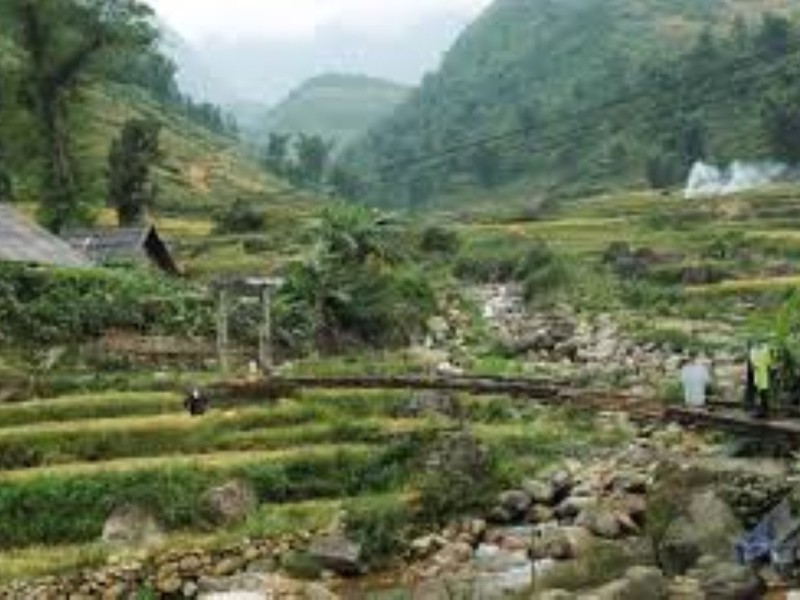
Quick Snapshot: What to Expect on Your First Visit
If you’re wondering what to expect in Ta Van Village Sapa, picture yourself stepping into a place that feels both timeless and surprisingly welcoming. From your very first moments, the rhythms of daily life in Sapa will gently surround you—morning mist hanging low, the scent of woodsmoke rising from quiet kitchens, and a steady flow of villagers heading out to tend the fields. As you settle in, you’ll find the typical village experience here is about immersion, not just observation. The slow pace lets you take it all in: children’s laughter, the occasional crow of a rooster, and the distant sound of buffalo bells blending into the background. Every sensory impression, from the earthy air to the sight of handwoven fabrics drying in the sun, will quickly convince you that you’ve landed in a corner of rural Vietnam where authenticity still thrives.
Typical village atmosphere and daily rhythms
Visiting Ta Van Village Sapa is like pressing pause on the outside world, inviting you to soak in a different kind of energy from the moment you arrive. Life here moves at a slow pace of life, letting you notice all the little details that city living often hides.
• Mornings start early, with gentle sunlight filtering through the mist and villagers beginning their routines
• The scent of woodsmoke mixes with fresh earth, signaling cooking fires and the preparation of local meals
• Children play in the lanes, calling out to one another while the sounds of distant buffalo bells mark the start of another day
• As the sun sets, the village grows quiet and peaceful, offering tranquil evenings that are perfect for reflection and rest
The daily rhythms in Ta Van Village invite you to let go of rush and expectation, helping you find peace in the simplicity of rural life. Let yourself slow down, and you’ll discover how deeply satisfying the ordinary can be when you truly pay attention.
Common visitor experiences and highlights
Whether you’re planning your first visit or returning for more, Ta Van Village Sapa delivers a handful of unforgettable experiences that travelers consistently love.
• Staying in a family-run homestay, where every meal and conversation brings you closer to village life
• Setting out on scenic trekking routes, passing through terraced rice fields and neighboring ethnic villages
• Interacting with locals—learning new customs, watching artisans at work, or sharing a cup of homemade rice wine
• Taking time to unplug, relax, and truly immerse yourself in authentic travel moments that are both humbling and memorable
These highlights of Ta Van Village Sapa aren’t just activities—they’re the heart of what makes this place special. Each one offers a chance to step outside your routine, connect with the real Sapa, and collect stories you’ll be eager to share long after you leave.
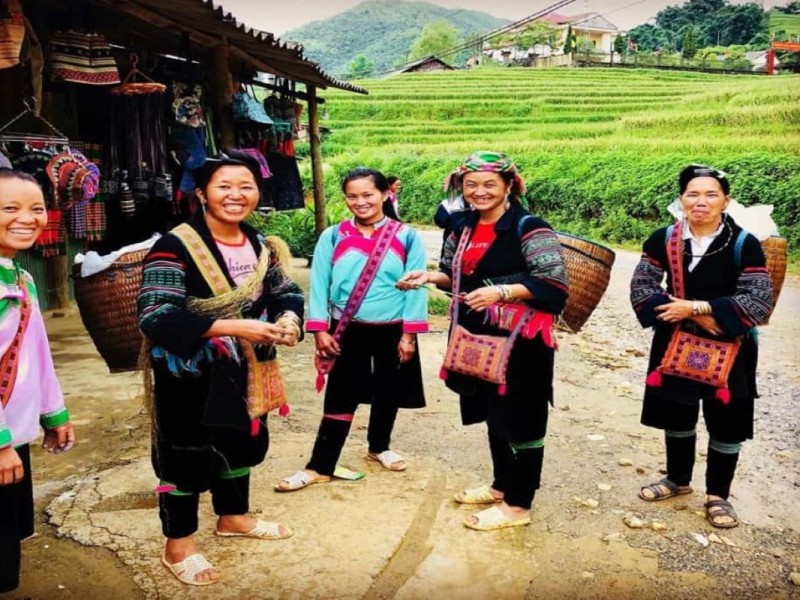
Discover the Heart and History of Ta Van Village
Ta Van Village Sapa is more than a scenic stop—it is a living tapestry woven from centuries of rich culture and history. Nestled within the mountains of northern Vietnam, this village is home to a vibrant mosaic of ethnic groups whose traditions have endured through time. Exploring Ta Van means stepping into stories that bridge past and present, where ancient festivals and daily customs continue to shape the identity of the community. Understanding its history deepens your connection to the landscape and the people who call it home, making your visit both meaningful and inspiring.
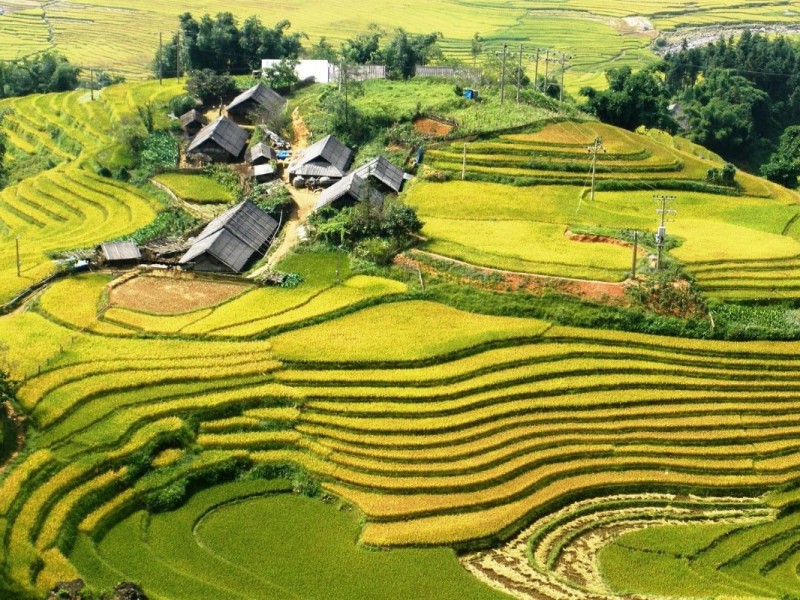
A Brief Journey Through Ta Van’s Past
The origins of Ta Van Village Sapa trace back to the settlement of diverse ethnic groups who brought with them unique languages, customs, and ways of life. This multi-ethnic village grew as the Giay, Hmong, and Dao peoples found a shared home amid the mountains. Over time, their traditions blended with the rhythms of the land, creating a rich cultural fabric that defines Ta Van today. From humble beginnings as farming communities, the village evolved alongside regional changes, preserving its distinct identity despite the modern world’s encroachment.
Stories of the Giay, Hmong, and Dao ethnic groups
Each ethnic group in Ta Van Village Sapa carries its own compelling story:
• The Giay people are known for their ancient rice farming techniques and gentle ways, their migration patterns reflecting centuries of adaptation to mountainous terrain.
• The Hmong community adds vibrancy with intricate embroidery and festive celebrations, their traditional livelihoods intertwined with the seasons and the land.
• The Dao people, famous for their indigo-dyed clothing and herbal medicine knowledge, maintain rituals and customs passed down through generations.
Together, these groups form a harmonious cultural mosaic, their migration patterns and traditional livelihoods preserved in daily life and village festivals. This blend enriches your visit with authentic experiences rooted in history.
Notable historical milestones and village legends
The story of Ta Van Village Sapa is punctuated by key events and enchanting folklore:
• The establishment of the village community as a meeting point for ethnic groups settling the Muong Hoa Valley.
• The celebration of annual festivals such as the New Rice Festival and the Mong A Pe festival, which mark agricultural milestones and cultural continuity.
• Local legends speak of mountain spirits and heroic ancestors who shaped the valley’s identity, passed down in vibrant oral traditions.
These milestones and stories enrich the village’s character, inviting visitors to connect with a living history that shapes daily life and the community’s hopeful future.
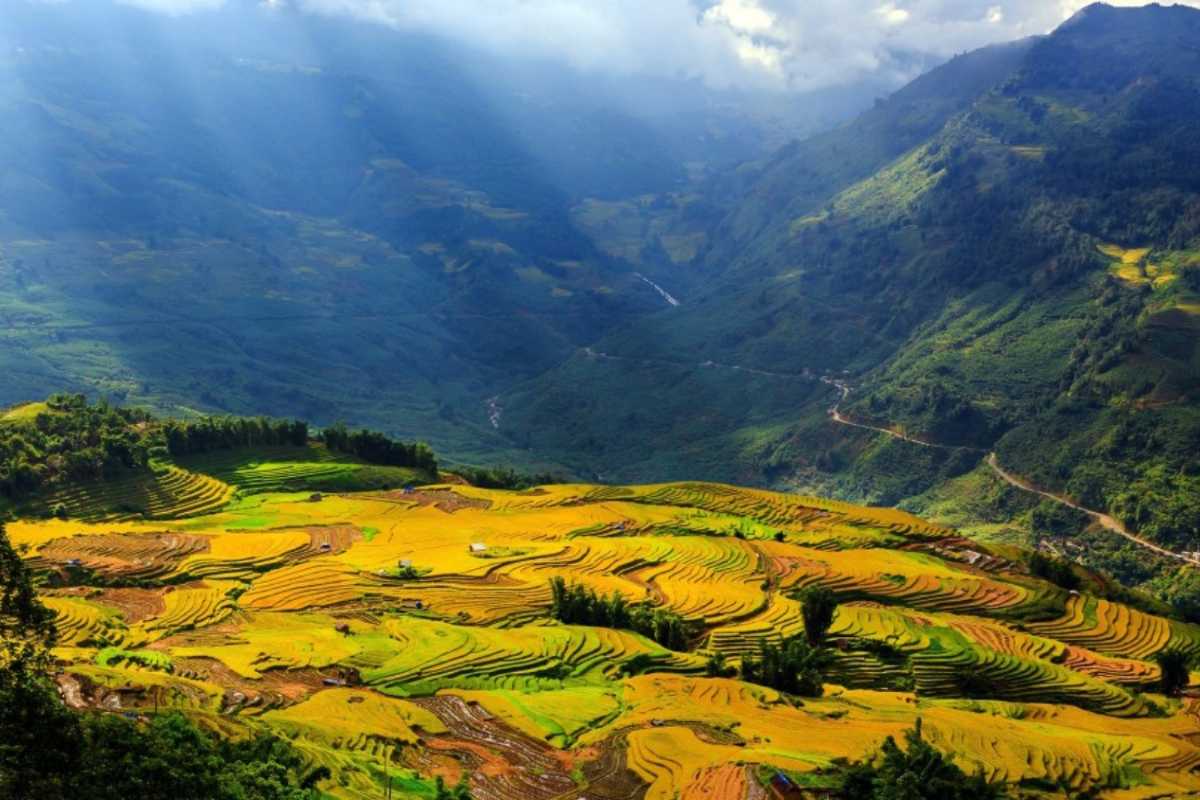
Traditions and Festivals You Won’t Want to Miss
Ta Van Village Sapa comes alive with vibrant traditions and festivals that offer visitors a deep dive into the culture and spirit of the region. For travelers planning their visit, knowing the Ta Van Village festivals and cultural calendar helps time their trip to experience the most memorable celebrations. From seasonal rituals to spectacular performances, the village’s events showcase the living heritage of its ethnic communities. These festivals are not just occasions but heartfelt expressions of identity, community, and gratitude—making them essential highlights for anyone eager to connect with the authentic pulse of Ta Van.
Annual celebrations, rice harvest, and cultural performances
The calendar in Ta Van Village Sapa is marked by celebrations deeply tied to the agricultural cycle and ethnic traditions. Key events to plan around include:
• New Rice Festival (Giay community): Celebrated after the rice harvest, this festival expresses thanks for a bountiful season with music, dance, and communal feasts.
• Mong A Pe festival (Hmong community): A colorful festival featuring traditional costumes, rituals, and performances aimed at warding off bad spirits and welcoming a new agricultural year.
• Rice harvest season (September-October): Visitors witness vibrant activity in the fields and community gatherings celebrating the season’s success.
• Traditional cultural performances: Throughout the year, live music, dance, and ritual shows bring the village’s heritage vividly to life.
Timing your visit during these events allows you to witness authentic festival rituals and join in community celebrations, enriching your journey with unforgettable cultural moments.
Folk art, music, and dance in village life
Artistic expression is woven into the daily life of Ta Van Village Sapa, where folk music, craftwork, and dance reflect centuries of tradition and community spirit. Highlights include:
• Ta Van folk music: Traditional songs and melodies played with ethnic instruments, often performed during festivals or special gatherings.
• Traditional crafts Ta Van: Weaving, embroidery, silver crafting, and natural dyeing techniques practiced mainly by the Giay, Hmong, and Dao people.
• Cultural performances: Dance and music performances that narrate local legends and celebrate agricultural cycles.
• Creative workshops: Opportunities for visitors to learn basic craft skills directly from local artisans.
These creative traditions offer a window into the soul of Ta Van’s communities and provide visitors with hands-on, immersive cultural experiences that go beyond sightseeing.

How Ta Van Keeps Its Traditions Alive
Ta Van Village Sapa stands as a testament to the resilience of cultural heritage in the face of modern challenges and growing tourism. The community actively balances welcoming visitors with protecting its unique identity, ensuring that traditions remain a living, breathing part of daily life rather than a staged spectacle. Visitors can trust that the culture here is authentic and carefully safeguarded, thanks to ongoing efforts and a strong sense of communal pride.
Efforts in cultural preservation and local education
Preserving culture in Ta Van Village Sapa is a collaborative effort involving local families, community groups, and educational initiatives.
• Local schools and workshops teach younger generations traditional crafts, language, and music, helping pass on skills and knowledge.
• Community programs focus on language preservation, especially for minority tongues at risk of fading.
• Some NGOs support cultural initiatives, such as funding traditional art classes or organizing festivals that celebrate ethnic heritage.
These programs reinforce the village’s commitment to keeping its traditions vibrant and relevant, allowing visitors to witness genuine practices rooted in centuries of history.
Insights from elders and community leaders
The wisdom and guidance of elders in Ta Van Village Sapa play a crucial role in maintaining cultural continuity.
• Elders share stories and customs orally, serving as living libraries of tradition and history.
• Community leaders actively guide decisions that affect how tourism is integrated, striving to respect both progress and heritage.
• Their perspectives highlight the ongoing negotiation between embracing modern life and preserving age-old ways.
Hearing directly from these respected voices reassures visitors that Ta Van’s cultural richness is deeply rooted and sincerely protected.
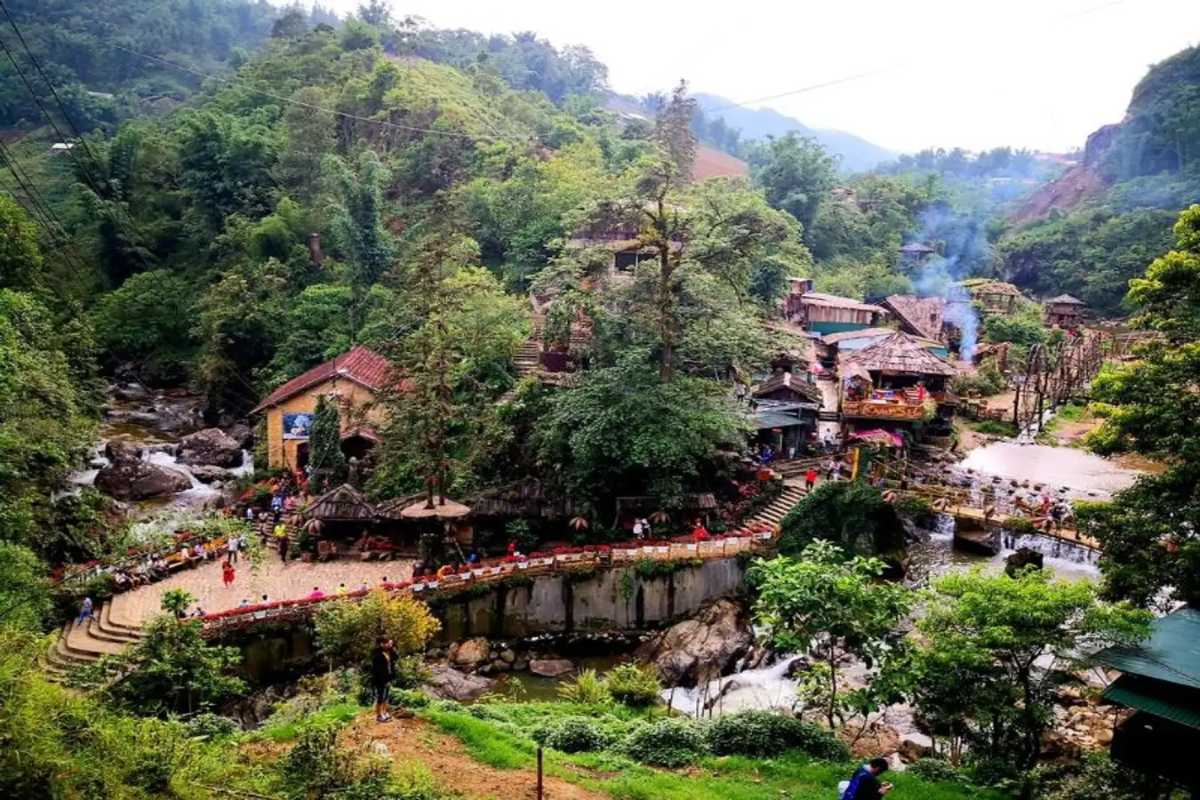
Planning Your Ta Van Trip: Essential Pre-Departure Info
Planning a trip to Ta Van Village Sapa requires a clear understanding of important logistics to ensure your journey is smooth and worry-free. This section gathers all the must-know information—from visas to local currency—helping you prepare confidently and set realistic expectations for your adventure in northern Vietnam’s stunning countryside.

Visa & Entry Requirements for Vietnam
To enter Vietnam, travelers must ensure they meet current visa requirements to avoid any border complications. Here’s what you need to know:
- Check if your nationality qualifies for visa exemptions or if you require an e-visa or visa-on-arrival.
- Apply for an e-visa online through official government portals if eligible.
- For visa-on-arrival, secure an approval letter beforehand and prepare to pay stamping fees at the airport.
- Ensure your passport is valid for at least six months beyond your planned entry date.
- Visit official consulate or embassy websites for the most accurate and updated information.
Understanding and completing these steps ensures you enter Vietnam legally and start your Ta Van Village Sapa trip without unnecessary delays or issues.

Currency, ATMs, and Payment in Ta Van
Handling money smoothly is essential when visiting Ta Van Village Sapa. The local currency is the Vietnamese Dong (VND), and knowing your payment options will make transactions easier.
• Cash is king: Most purchases in Ta Van Village Sapa are made with cash, especially at homestays and local markets.
• ATMs are available in Sapa Town, but rarely in Ta Van itself, so plan accordingly.
• Credit and debit cards are accepted mainly in larger businesses in Sapa Town, not usually in the village.
• It’s wise to carry small denominations for convenience when buying snacks, souvenirs, or paying guides.
Prepare your wallet by exchanging enough money before leaving Sapa Town, and always inform your bank about international travel to avoid card issues. This knowledge will keep your spending seamless and stress-free while enjoying the authentic local experience.
Anya's Cash Conundrum: Navigating Local Payments
Most travel guides will tell you to carry cash, but my recent trip to Ta Van Village Sapa taught me a far more nuanced lesson about local payments – one that saved me from awkward moments and ensured smooth transactions in this charming, off-the-beaten-path destination. This wasn't just about having money; it was about having the right money, a subtle but crucial difference that truly impacts your daily interactions in rural Vietnam.
As I left the more bustling Sapa Town, my wallet felt reassuringly thick with Vietnamese Dong. I'd made sure to hit an ATM and withdraw a decent sum, thinking I was fully prepared for the cash-centric life of a remote village. My expectations were simple: cash is king, and I had plenty of it. The air grew cooler, carrying the scent of damp earth and distant woodsmoke as our motorbike weaved down the winding road into the Muong Hoa Valley. Ta Van felt like stepping into a postcard, all emerald rice terraces and traditional wooden homes, a stark contrast to the more developed Sapa.
My "conundrum" began subtly. After settling into my homestay, the first thing I wanted was a refreshing local drink. I spotted a small, rustic shop, more of a family's front room than a store, selling cold sodas. "How much?" I asked, holding up a 500,000 VND note. The young woman behind the counter smiled kindly, but her eyes widened slightly, and she shook her head, gesturing to her empty cash box. My heart sank a little. I tried a 200,000 VND note. Same response. It quickly dawned on me: my large denominations, so useful in the city, were practically useless here. There was no change. No one had change for such big bills. It wasn't that they didn't want my money; they simply couldn't break it. A wave of slight embarrassment washed over me, mixed with a chuckle at my own city-dweller naiveté. The crisp feel of the large notes in my hand suddenly felt heavy, not empowering.
I eventually found a small eatery that had just sold a few bowls of pho and was able to break my 200,000 VND note. The relief was palpable, and the simple soda tasted all the sweeter. This experience wasn't a major challenge, but it was a profound insight into the daily rhythms of Ta Van. Locals operate with smaller cash flows, and large bills disrupt that delicate balance. My expertise grew not from avoiding the problem, but from experiencing it firsthand and learning to adapt. It reinforced the trustworthiness of local advice: when they say "cash," they mean small cash.
Here are my actionable takeaways for navigating payments in Ta Van Village:
- Break it Down in Sapa Town: Before you even head to Ta Van, make sure you have plenty of small bills (10,000 VND, 20,000 VND, 50,000 VND, and 100,000 VND notes) from ATMs in Sapa or by making a larger purchase there. These cash denominations in Vietnam are your best friends in rural areas.
- Embrace Small Purchases: Use larger bills (if you must) at slightly bigger establishments in Sapa Town or for your homestay payment, where they are more likely to have change.
- No ATMs in Ta Van: Do not expect to find ATMs in Ta Van Village. Your last chance for cash withdrawal is in Sapa Town. Plan accordingly.
- Bargain Respectfully (if at all): For small purchases, don't haggle aggressively. The prices are often already very fair, and these local payments directly support families.
- Keep it Separate: Consider having a small pouch or pocket specifically for your smaller bills for quick access.
My cash conundrum in Ta Van was a minor hiccup that became a memorable lesson. It was a gentle reminder that travel isn't just about seeing new places, but about understanding and adapting to new ways of life. It deepened my appreciation for the simplicity and self-sufficiency of the village.
Recommendation: Don't let payment worries deter you from experiencing the magic of Ta Van Village Sapa. Just come prepared with a good stash of small bills, and you'll find every transaction, no matter how small, becomes a seamless part of your authentic adventure.
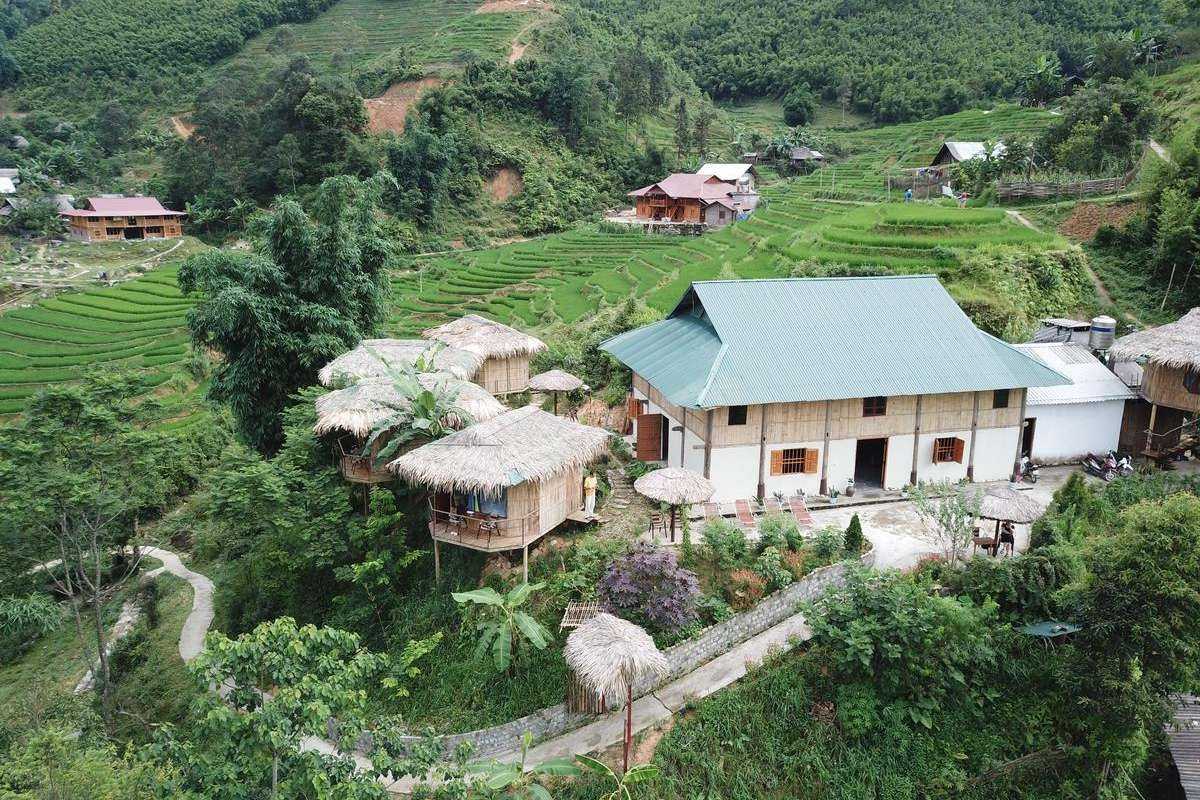
Connectivity: Wi-Fi, SIM Cards, and Charging in Rural Sapa
When visiting Ta Van Village Sapa, it's important to have realistic expectations about digital connectivity and power options. While many homestays offer Wi-Fi, the signal can be spotty due to the village’s remote location. For reliable data, purchasing a local SIM card, such as a Viettel SIM Sapa, in Sapa Town before heading to Ta Van is recommended. Power outlets may be limited, so bringing a fully charged power bank is essential for keeping your devices running. Whether you’re planning to stay connected or embrace a digital detox, knowing these details helps you prepare for a comfortable and enjoyable stay.
- Wi-Fi availability is generally limited and can be intermittent in rural homestays.
- Viettel SIM Sapa offers the best network coverage in Ta Van and surrounding areas.
- Charging facilities may be scarce; bring a power bank and necessary adapters.
- Some visitors find the slower connection a chance to unplug and fully immerse in the experience.
Understanding connectivity in Ta Van allows you to strike the right balance between staying in touch and embracing the tranquility of rural Sapa. Pack smart, and you’ll enjoy your trip with confidence whether online or offline.
Robert's Digital Detox (or Delight): Staying Connected in Ta Van
In our hyper-connected world, the thought of being truly offline can spark a flicker of anxiety for any traveler. My journey to Ta Van Village Sapa, however, wasn't just another scenic escape; it became an unexpected lesson in digital resilience and the surprising joy of unplugging. Unlike typical destinations where Wi-Fi is a given and mobile data is seamless, Ta Van offered a unique, often intermittent, connection to the digital world, forcing me to adapt and, ultimately, to embrace a different kind of freedom.
Before arriving, I'd packed my usual arsenal: phone, laptop, power bank, and a vague expectation that "rural internet Sapa" would probably mean slow Wi-Fi. My initial feelings were a mix of excitement for the authentic experience and a slight apprehension about being truly cut off. As our taxi bumped along the final stretch of road, leaving the 4G signals of Sapa Town behind, a sense of anticipation grew. The village itself, nestled amongst the terraces, felt timeless, a place where the rhythm of nature dictated the day, not notification pings.
The journey of discovery began the moment I checked into my homestay. "Wi-Fi?" I asked, almost instinctively. My host smiled, pointing to a router in the corner. "Sometimes," she chuckled gently. And "sometimes" proved to be the operative word. For the first few hours, it was a delightful digital detox. The silence, broken only by the chirping of crickets and the distant murmur of the stream, was profound. My fingers, accustomed to scrolling, felt strangely idle. I spent an entire afternoon simply watching the clouds drift over the mountains, listening to the buffalo bells, and chatting with my host family, truly staying connected in Ta Van, but not in the way I'd expected.
But then, the practicalities kicked in. I wanted to upload a stunning photo of the rice terraces, share a quick update with family, or check the weather for tomorrow's trek. That's when the "delight" part of the detox became a bit more challenging. The Wi-Fi was indeed sporadic, often dropping out entirely. My phone's data signal flickered between 3G and no service. There were moments of mild frustration, particularly when a social media upload would time out repeatedly. I found myself wandering around the homestay, phone aloft, searching for that elusive bar of signal. I discovered a "sweet spot" near the front door where the Viettel SIM Sapa I'd bought in Hanoi occasionally offered a fleeting but strong connection. It became a small victory each time I successfully sent a message or loaded a map. The emotional arc shifted from initial anxiety to peaceful acceptance, then a touch of playful determination to "beat" the signal, and finally, a deep appreciation for the moments when I wasn't even trying. The quiet moments, free from digital distractions, were truly some of the most memorable.
This experience offered unique insights. The intermittent connectivity wasn't a flaw; it was an invitation. It forced me to be present, to engage more deeply with my surroundings and the people around me. My expertise now includes the art of strategic connectivity in rural areas: knowing when to try, when to give up, and when to simply enjoy the moment. The most valuable lesson was that true connection in Ta Van comes not through a screen, but through shared meals, a genuine smile, and the breathtaking landscape.
Here are my actionable takeaways for staying connected (or happily disconnected) in Ta Van:
- Get a Local SIM Card: A Viettel SIM Sapa purchased in Sapa Town or Hanoi is your best bet for mobile data. Their coverage tends to be the most reliable, even if spotty in some parts of Ta Van Village Sapa.
- Download Offline Maps: Before you leave Sapa Town, download offline maps (e.g., Google Maps) of the entire region. This is crucial for navigation when signal drops.
- Pack a Power Bank for Travel: With potentially unreliable power and constant searching for signal, your phone battery will drain faster. A fully charged power bank is essential.
- Manage Expectations: Understand that Wi-Fi in homestays will likely be basic and intermittent. Don't rely on it for heavy streaming or work.
- Embrace the Digital Detox: See the limited connectivity as an opportunity to truly unplug. Engage with your surroundings, your host family, and other travelers. It's surprisingly liberating!
- Pre-Download Entertainment: If you need entertainment, download movies, books, or podcasts before you arrive.
My "digital detox" in Ta Van wasn't just about surviving without constant internet; it was about rediscovering the joy of being truly present. It taught me that some of the richest experiences happen when you're not looking at a screen.
Recommendation: Go to Ta Van Village with an open mind about connectivity. Prepare for the possibility of limited internet, but more importantly, prepare to be delighted by the profound connections you'll make offline. It's an experience every traveler should embrace.
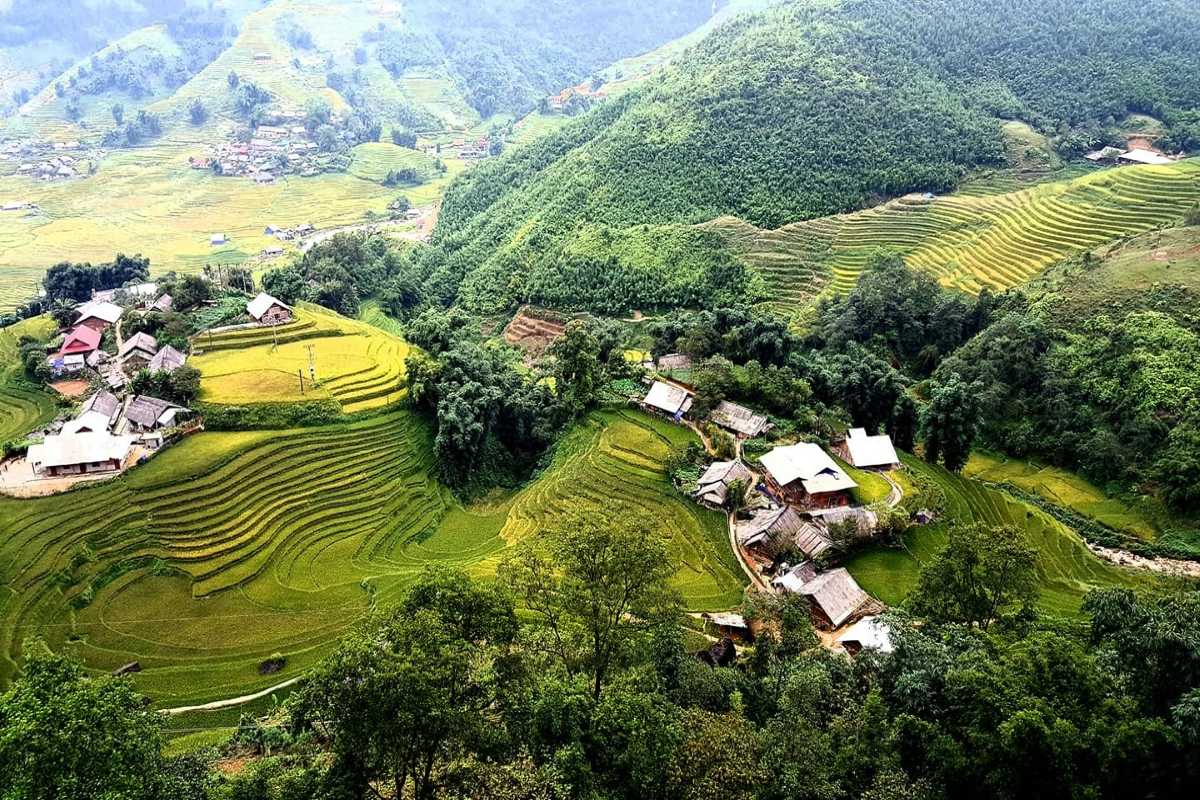
Travel Insurance: Why It's Non-Negotiable for Adventure
When planning your trip to Ta Van Village Sapa, securing comprehensive travel insurance is essential. The remote terrain and active trekking opportunities present unique risks that standard policies may not cover. Having the right insurance protects you from unexpected medical emergencies, trip cancellations, and evacuation costs, giving you peace of mind so you can fully enjoy your adventure.
- Look for comprehensive coverage that includes medical emergencies and evacuation specific to rural areas.
- Ensure your policy covers trekking activities and any adventure sports you plan to undertake.
- Include trip cancellation and interruption protection in case of unforeseen changes.
- Keep emergency contact numbers and insurance details easily accessible throughout your trip.
Investing in proper travel insurance is a responsible step that safeguards your journey to Ta Van Village Sapa, letting you focus on the experience without worry. Don’t overlook this critical preparation—your safety and well-being depend on it.

Getting to Ta Van Village – All Your Travel Options
Reaching Ta Van Village Sapa is a key part of your journey, and having clear, practical travel options makes planning easier. Whether you prefer comfort, adventure, or local flavor, this guide lays out all ways to get to Ta Van from Sapa Town and beyond. With comparative insights, you can pick the route that fits your style and schedule for a smooth start to your Sapa experience.
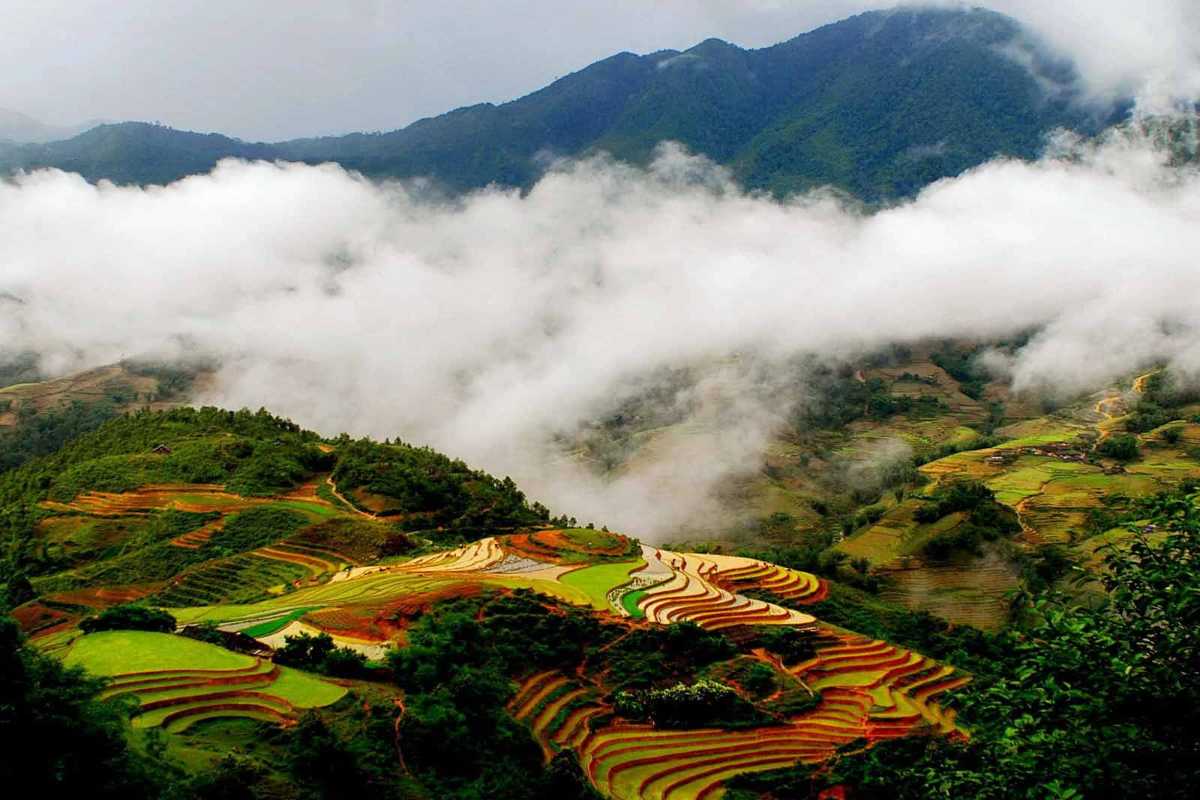
The Best Ways to Reach Ta Van from Sapa Town
Travelers to Ta Van Village Sapa can choose between several transport modes, each offering different advantages depending on preferences for cost, convenience, and adventure:
- Private car or taxi: Offers comfort and direct travel with flexible timing, ideal for groups or those carrying luggage. Prices vary; negotiation is common.
- Local motorbike rental: Provides freedom to explore at your own pace but requires experience and caution on winding mountain roads.
- Xe om (motorbike taxi): A popular local option for shorter trips or solo travelers, typically cheaper but less comfortable for long distances.
- Trekking routes: For adventurous visitors, hiking from Sapa Town through villages like Lao Chai offers immersive scenic and cultural experiences but requires fitness and proper gear.
Choosing the best option depends on your travel style and comfort level. This breakdown helps you decide how to start your Ta Van Village Sapa adventure confidently.
Private car, taxi, and local motorbike options
Navigating the journey from Sapa Town to Ta Van Village Sapa using motorized transport is straightforward when you know the steps:
- Hiring a private car or taxi: Arrange via hotels, local agencies, or ride-hailing apps if available. Always agree on fares upfront to avoid surprises.
- Renting a motorbike: Requires a valid license; roads can be narrow and steep, so experience is essential. Carry safety gear and ride cautiously.
- Using a xe om (motorbike taxi): Negotiate price before departure; expect a lively local experience but limited luggage space.
- Safety tip: Mountain roads may be slippery, especially in rainy seasons—drive carefully and avoid night travel.
These options offer a range of convenience and adventure, allowing you to tailor your trip to Ta Van Village Sapa according to your preferences.
Trekking routes for the adventurous traveler
For those who prefer a more immersive approach, trekking from Sapa Town to Ta Van Village Sapa offers unforgettable landscapes and cultural encounters:
- The most popular trekking route passes through Lao Chai village, covering approximately 12 kilometers and taking 4–6 hours depending on pace.
- The path features terraced rice fields, suspension bridges, and panoramic mountain views, with opportunities to meet local villagers.
- Trekkers should prepare with sturdy shoes, water, snacks, and consider hiring a local guide for navigation and cultural insights.
- Note weather conditions: trails can be muddy during rainy seasons, requiring extra caution.
Trekking combines physical challenge with authentic rural experience, perfect for travelers seeking connection beyond the usual tourist path.
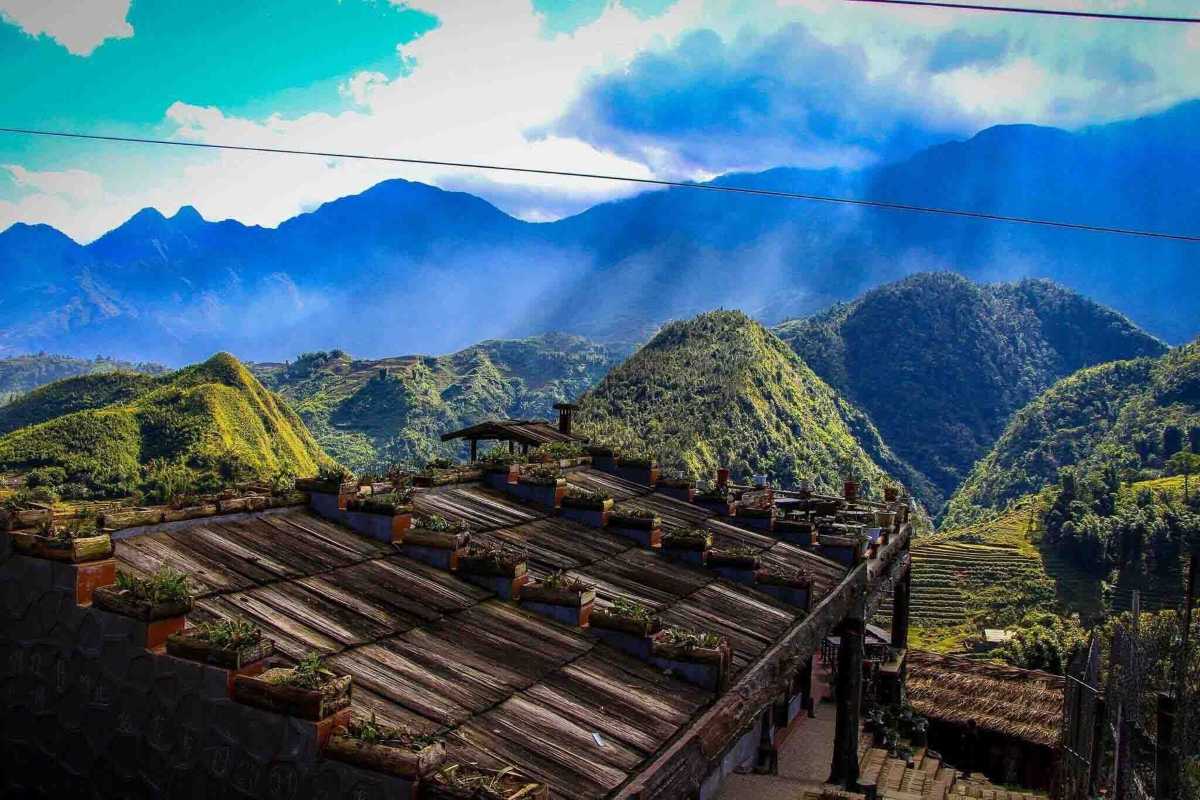
Entry Fees, Tickets, and Local Permits Explained
Visiting Ta Van Village Sapa and the surrounding Muong Hoa Valley involves certain entry fees and permits designed to support local communities and conservation efforts. Understanding these costs upfront helps you avoid surprises and ensures your visit contributes positively to the area’s development.
Where to pay and what’s included
When arriving in Ta Van Village Sapa, entry fees are usually collected at designated ticket booths located near trailheads or village entrances.
- Ticket booths in the Muong Hoa Valley collect fees that help fund local infrastructure and community projects.
- Fees typically cover access to trekking routes and natural sites within the valley.
- Payments support sustainable tourism initiatives and village development programs.
- Visitors receive a permit or ticket to carry during their trek as proof of payment.
By paying at official points, you help preserve the beauty and culture of Ta Van Village Sapa while enjoying worry-free access to this stunning region.
Latest updates on prices and policies
Entry fees and permit regulations in Ta Van Village Sapa can change seasonally or due to new local policies.
- Travelers are advised to check with their homestay hosts or official tourism offices for the latest fee schedules.
- Some permits may vary depending on trekking route or group size.
- Recent policy updates may include enhanced conservation rules or ticketing procedures.
- Staying informed helps avoid fines and ensures a smooth experience.
Regularly confirming current entry fees and rules is a simple step to respect local guidelines and protect the natural and cultural heritage of Sapa.
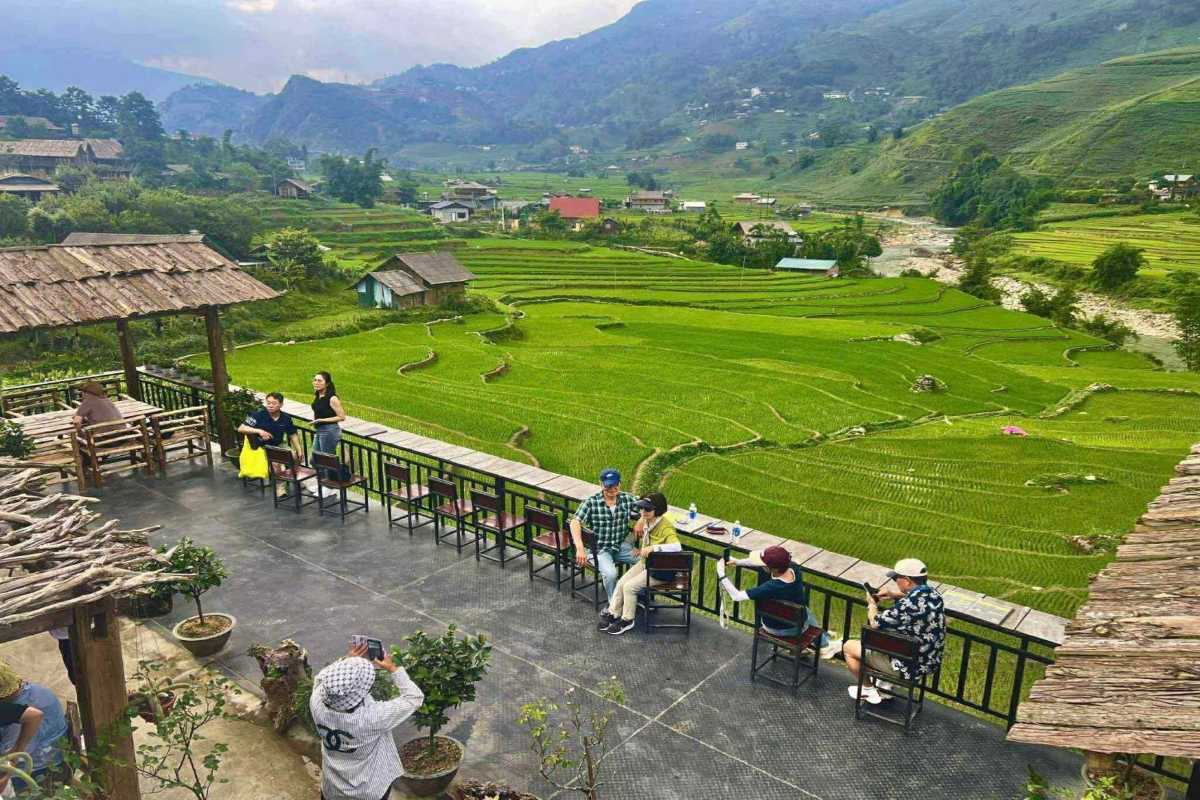
Travel Tips for a Smooth Arrival
Arriving at Ta Van Village Sapa can be a wonderful start to your adventure if you’re prepared for the unique conditions. Knowing some essential tips helps you navigate safely and settle in with ease, especially if this is your first time visiting.
Navigating narrow roads and bridges
The journey to Ta Van Village Sapa involves traversing winding, narrow roads and small bridges that require caution:
- Roads are often unpaved and can become slippery, especially during the rainy season.
- Bridges may be narrow, with limited guardrails, demanding careful crossing by motorbikes and vehicles.
- Slow down when navigating sharp bends or steep sections to avoid accidents.
- Motorbike riders should wear helmets and protective gear at all times.
Being aware of these conditions and preparing accordingly ensures your arrival is safe and stress-free, allowing you to fully enjoy the beauty that awaits in Ta Van.
Packing advice for different weather and seasons
Packing smart is vital for your comfort in Ta Van Village Sapa, where weather can change quickly:
- Bring layered clothing to adapt from cool mornings to warmer afternoons.
- Waterproof jackets and sturdy hiking shoes are essential during the rainy season.
- Include sun protection such as hats and sunscreen for the dry season.
- Don’t forget a small backpack for daily essentials and a reusable water bottle.
Following these packing tips helps you stay comfortable and prepared throughout your trip, no matter the season or weather in Ta Van.
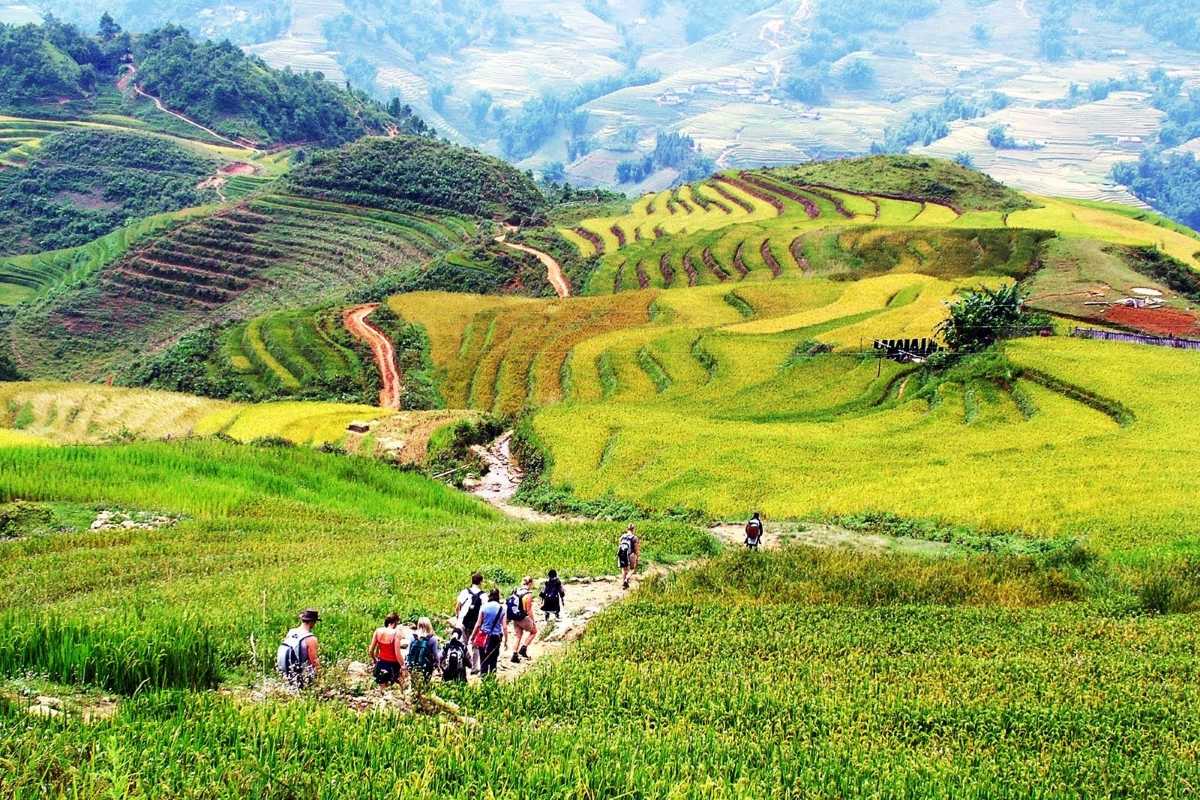
Top Things to Do in Ta Van Village
Ta Van Village Sapa offers an unforgettable blend of natural beauty, cultural richness, and authentic experiences. Whether you’re seeking immersive homestays, scenic treks, or cultural exchanges, this village provides activities that make your visit truly memorable. Exploring Ta Van will deepen your appreciation of Sapa’s unique heritage and landscapes.
- Authentic homestays with local families
- Trekking routes through rice terraces and ethnic villages
- Sampling traditional cuisine and cooking classes
- Participating in handicraft workshops and cultural performances
- Day trips to nearby villages like Lao Chai, Giang Ta Chai, and Ban Ho
- Photography opportunities showcasing breathtaking scenery and daily life
- Meaningful interactions with local residents beyond tourism
These activities let you engage fully with the village’s charm and offer experiences that stay with you long after your trip. Ta Van Village is not just a destination — it’s a journey into authentic Sapa life.
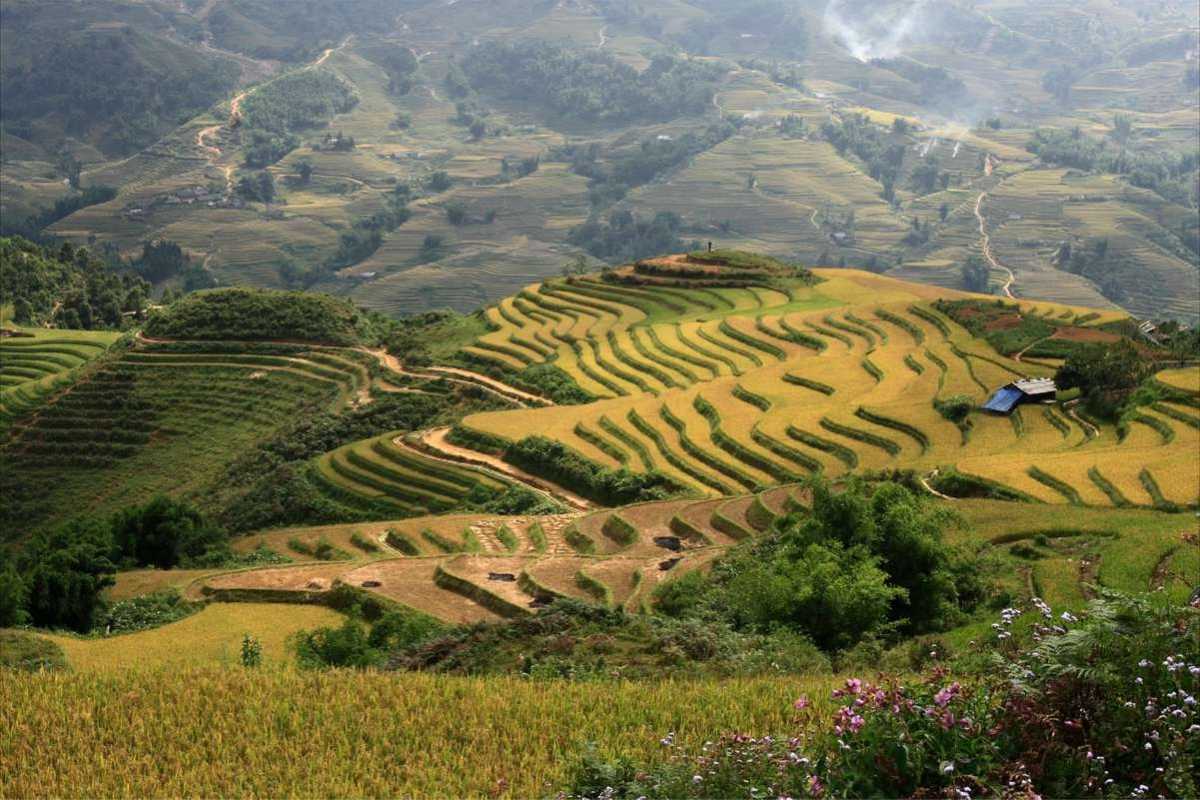
Experience an Authentic Homestay
Staying in a homestay at Ta Van Village Sapa provides a rare opportunity to live alongside local families and absorb their culture intimately. Unlike hotels, homestays offer personal interaction and insights into traditional lifestyles.
How to choose the right homestay for your style
Finding the ideal homestay involves matching your comfort and travel preferences:
- Consider family size and accommodation capacity
- Look for amenities: basic vs. upgraded facilities
- Choose location based on trekking access or quietness
- Check guest reviews and ratings for hospitality
- Book early during busy seasons to secure your spot
A well-chosen homestay enhances your cultural immersion and makes your stay comfortable and meaningful.
What daily life with a local family is really like
Living with a family in Ta Van Village Sapa means embracing authentic rhythms and traditions:
- Sharing freshly cooked meals prepared with local ingredients
- Helping with daily chores or farming activities (optional)
- Participating in traditional customs and celebrations
- Experiencing village life’s peaceful pace and genuine hospitality
This experience fosters a heartfelt connection and offers unforgettable cultural insights.
Liam's Homestay Revelation: Beyond the Brochure
For many travelers, accommodation is simply a place to rest your head. But my recent homestay in Ta Van Village Sapa wasn't just a bed for the night; it was a profound, heartwarming revelation that transcended any brochure description. It was here, amidst the quiet rhythms of village life, that I discovered the true, intangible value of human connection, turning a simple stay into the most authentic cultural immersion of my trip.
My initial feelings arriving at the homestay were a mix of anticipation and a slight apprehension about the unknown. I'd booked a "basic" stay, expecting rustic conditions and perhaps a polite, transactional interaction. The air was cool and crisp, carrying the scent of woodsmoke and damp earth. As our motorbike pulled up to a traditional wooden house nestled amongst vibrant green rice paddies, I was greeted by a warm, smiling woman, my host, who gestured me inside with an immediate sense of welcome. The interior was simple but inviting, with a communal living space and a crackling fire in the hearth. This wasn't a hotel; it was clearly a home.
The "journey" of my homestay experience unfolded organically, not through planned activities, but through shared moments. The language barrier was present, a gentle hum in the background, but it dissolved quickly through smiles, gestures, and the universal language of shared food. On my first evening, my host family invited me to help prepare dinner. I awkwardly chopped vegetables while their children giggled at my clumsy attempts, and the grandmother patiently showed me how to wrap a spring roll. The sizzle of oil, the aroma of fresh herbs, and the quiet chatter of the family filled the small kitchen. Later, we gathered around a low table, sharing bowls of fragrant pho and sips of potent rice wine. It wasn't just a meal; it was a shared experience, a genuine invitation into their daily life.
The true revelation came on my second morning. I woke early to the sounds of roosters crowing and buffalo bells jingling in the distance. Stepping outside, the mist still clung to the peaks, and the rice terraces glowed with a soft, ethereal light. My host, already up and tending to her garden, simply smiled and offered me a cup of hot tea. As I sat on the porch, watching the village slowly awaken, a profound sense of peace washed over me. It wasn't about the amenities or the comfort; it was about the feeling of belonging, of being genuinely welcomed into a community. This was the true homestay experience Ta Van offered – a chance to witness, and briefly become a part of, a way of life so different from my own. The initial apprehension had completely melted away, replaced by a deep gratitude and warmth. This cultural connection Ta Van provided was far richer than any curated tour.
This firsthand involvement taught me that the real expertise in choosing a homestay isn't about finding the fanciest one, but the one where you feel a genuine connection. It's about being open to unexpected moments and allowing yourself to be immersed. The profound perspective I gained was that travel is truly transformative when you step outside your comfort zone and allow authentic human interaction to guide your journey.
Here are my actionable takeaways for maximizing your homestay experience in Ta Van:
- Go with an Open Mind: Don't expect hotel luxuries. Embrace the simplicity, the shared spaces, and the unique rhythms of a local home.
- Learn a Few Phrases: Even a simple "Xin chào" (hello) or "Cảm ơn" (thank you) in Vietnamese can open doors to warmer interactions and show respect.
- Be Willing to Participate: If offered, lend a hand with cooking, farming, or simple chores. It's a fantastic way to bond and learn.
- Bring a Small Gift (Optional): A small, thoughtful gift from your home country (e.g., local candy, a postcard) can be a lovely gesture, but never feel obligated.
- Ask Questions (Respectfully): Show genuine curiosity about their culture, traditions, and daily life. Your host family will likely be delighted to share.
- Embrace the Unplanned: Some of the best moments will be spontaneous – a shared laugh over a cup of tea, watching children play, or simply observing daily life.
My homestay in Ta Van was more than just accommodation; it was a deep dive into the heart of a community, a lesson in connection, and an experience I will cherish forever. It reminded me that the most valuable souvenirs are often the memories forged with people.
Recommendation: If you're visiting Ta Van Village Sapa, do yourself a favor and choose a homestay. It's an unparalleled opportunity for a genuine cultural connection and a truly authentic experience that goes far beyond what any hotel could offer.
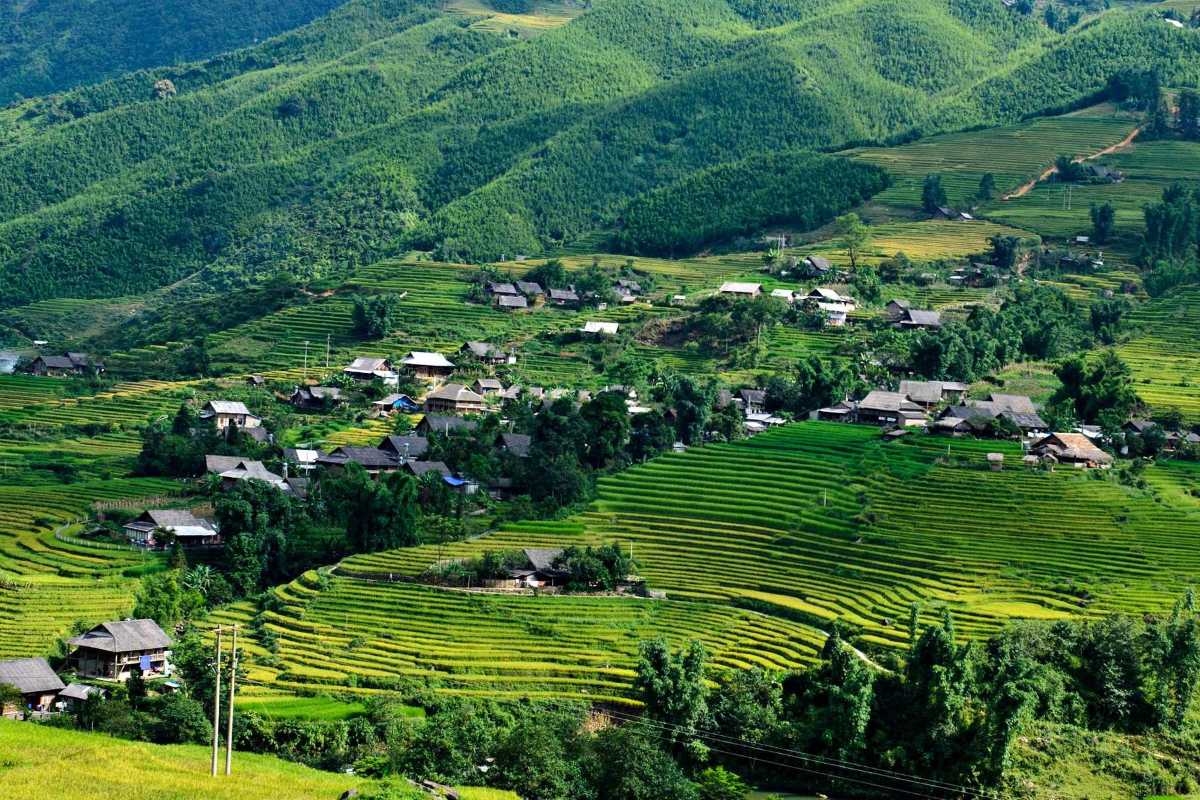
Trekking Adventures Around Ta Van
Ta Van Village Sapa is an ideal starting point for trekking enthusiasts eager to explore Vietnam’s famous rice terraces and ethnic minority villages. The area offers a variety of routes that showcase stunning landscapes, cultural richness, and rewarding physical challenges.
- Well-marked trails connecting Ta Van to Lao Chai and Giang Ta Chai
- Opportunities to cross traditional suspension bridges spanning lush valleys
- Views of expansive rice terraces framed by mountains
- Hiking options suitable for different fitness levels, from gentle walks to more challenging climbs
Trekking here not only brings breathtaking scenery but also offers deep immersion into local cultures, making it a must-do experience for visitors seeking adventure and authenticity.
Popular trails: Lao Chai, Giang Ta Chai, and beyond
For trekkers heading out from Ta Van Village Sapa, these routes are the highlights:
- Lao Chai Trek: Approx. 6 km, moderate difficulty, passing through terraced fields and Giay ethnic villages
- Giang Ta Chai Trail: Roughly 7 km, more rugged terrain, famous for its waterfalls and Hmong communities
- Combined multi-day trek options linking several villages and valleys
- Scenic suspension bridges crossing the Muong Hoa River, offering unique photo opportunities
Choosing these trails allows visitors to experience diverse natural beauty and rich cultural encounters, all within a manageable trek length.
Scenic viewpoints and hidden gems along the way
Explorers will discover tranquil spots perfect for rest and photography:
- Quiet terraces overlooking endless emerald paddies
- Hidden groves and bamboo forests off the beaten path
- Secluded riverside areas ideal for picnics and reflection
- Lesser-known hamlets where traditional crafts are practiced
- Sunrise and sunset vantage points offering breathtaking light on the landscape
Taking time to pause at these gems enriches the trekking experience beyond the usual routes and deepens appreciation of Ta Van’s serene beauty.
Li Na's Solo Trekking Experience: Navigating the Trails
While many travelers opt for guided tours, my recent adventure in Ta Van Village Sapa was a deliberate foray into solo trekking, a decision that transformed a simple hike into a profound journey of self-discovery. This wasn't just about putting one foot in front of the other; it was about confronting my own apprehensions, embracing the wild beauty of the Vietnamese mountains, and finding an unexpected sense of empowerment on trails less trodden.
My initial feelings before setting out were a potent mix of exhilarating freedom and a touch of nervous anticipation. Could I truly navigate these remote paths alone? Would the trail conditions be too challenging? I’d studied maps, packed light, and mentally prepared for the solitude. The morning air in Ta Van was cool and damp, carrying the earthy scent of the rice paddies and the distant sound of roosters. Mist still clung to the peaks, promising a day of dramatic reveals as the sun climbed higher. My expectation was a challenging but rewarding physical experience; what I found was far more.
The journey unfolded with each step. I chose a less-frequented path towards a waterfall I'd heard whispers about, a decision that immediately plunged me into a deeper level of immersion. The initial stretch was well-defined, winding through terraced fields where farmers were already at work, their conical hats bobbing in the distance. The air was alive with the buzz of insects and the gentle rustle of bamboo. Soon, the path narrowed, becoming a thin ribbon of red earth, sometimes slick with morning dew, sometimes rocky and uneven. This was where the "navigating" truly began. I had to pay close attention to the subtle shifts in the trail conditions, sometimes hopping across small streams, other times carefully placing my feet on slippery stones. There were moments of doubt, particularly when the path seemed to vanish into dense foliage, but a quick check of my offline map and a deep breath always set me straight.
One particularly memorable moment came when I emerged from a thick bamboo grove onto an unexpected ridge. Below me, the Muong Hoa Valley stretched out, a breathtaking tapestry of vibrant green and golden yellow rice terraces, cascading down to the winding river. The silence was profound, broken only by the whisper of the wind and the distant cry of a bird of prey. A wave of pure, unadulterated joy washed over me, a feeling of triumph that was uniquely mine because I had found this spot, alone. Later, I encountered a group of Hmong women, their baskets laden with herbs, walking with an effortless grace that belied the steep incline. We exchanged smiles, and a few shared words, a small but meaningful local encounter that reminded me I was a guest in their incredible world. The physical exertion was real – my calves burned on the ascents, and my knees felt the strain on the descents – but the emotional reward, the sense of self-reliance and connection to nature, far outweighed any discomfort.
This solo trekking Ta Van experience offered unique insights into both the landscape and myself. I learned that true expertise on the trail isn't just about physical endurance, but about mindful observation and trusting your instincts. It's about being prepared for anything and finding beauty in the unexpected. The profound perspective I gained was that solitude in nature isn't lonely; it's deeply enriching, allowing for a level of self-discovery that group travel often doesn't afford.
Here are my actionable hiking tips Sapa for anyone considering solo trekking in Ta Van:
- Invest in Good Footwear: Sturdy, waterproof hiking boots are non-negotiable. The trail conditions can be muddy, rocky, and slippery, even after a dry spell.
- Download Offline Maps: Mobile signal is unreliable. Download detailed offline maps of the area (e.g., Maps.me or Google Maps) before you leave Sapa Town.
- Carry Ample Water & Snacks: There are limited places to buy supplies once you're on the trails. Pack more water than you think you'll need, along with energy-boosting snacks.
- Tell Someone Your Route: Inform your homestay host or a trusted contact about your planned route and estimated return time.
- Dress in Layers: The weather in the mountains can change rapidly. Layers allow you to adapt to temperature fluctuations and unexpected rain.
- Respect Local Culture: When you encounter locals, offer a friendly "Xin chào." Be mindful of privacy if taking photos.
- Consider a Local Guide for Complex Routes: While I trekked solo, for longer or more challenging routes, a local guide offers invaluable knowledge of the terrain and cultural insights.
My solo trek through Ta Van was more than just a walk; it was a journey of empowerment, a deep immersion in nature, and a testament to the quiet strength found in navigating the world on your own terms.
Recommendation: If you're seeking a genuinely transformative experience and feel comfortable with self-reliance, I wholeheartedly recommend solo trekking in Ta Van Village Sapa. It's an incredible opportunity to connect with the landscape, the local culture, and yourself, leaving you with a profound sense of accomplishment and unforgettable memories.
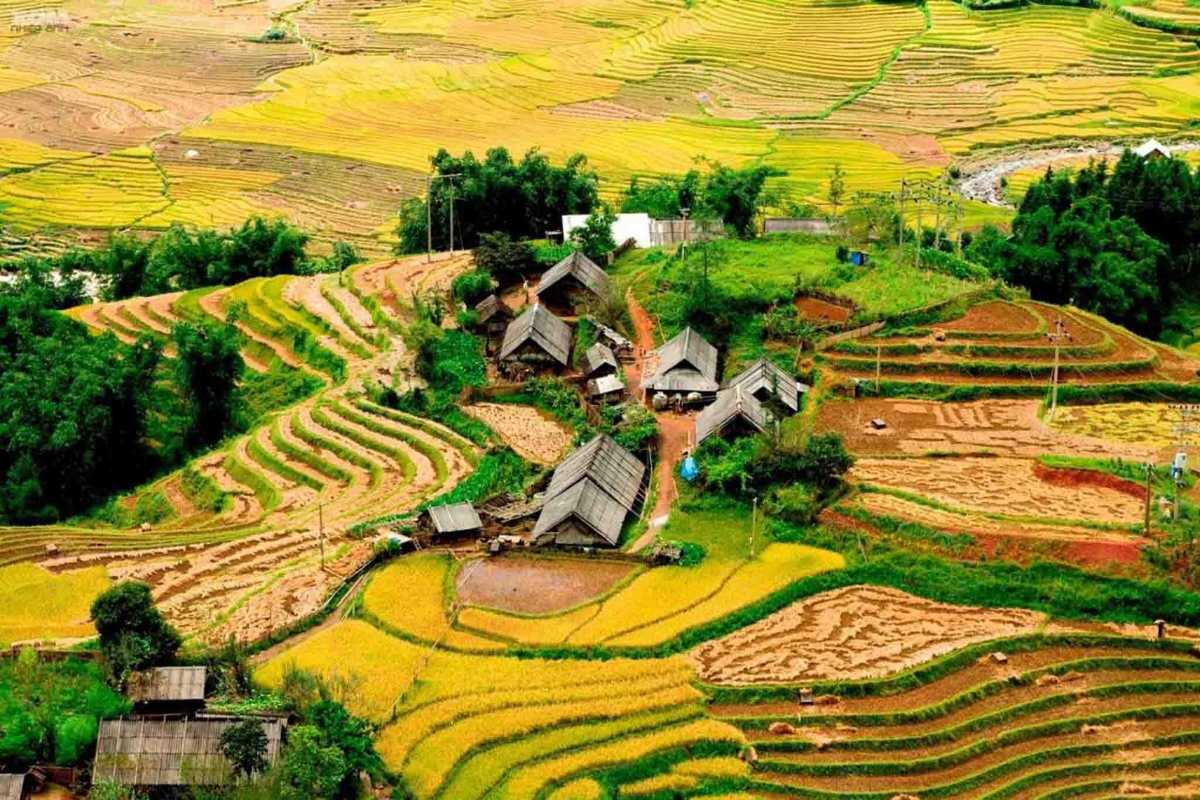
Dive Into Local Cuisine and Home-Cooked Meals
Ta Van Village Sapa offers a rich culinary scene where visitors can savor authentic local flavors made from fresh, natural ingredients. Experiencing the village’s food culture provides a delicious window into daily life and traditions.
- Freshly harvested vegetables and herbs from local gardens
- Traditional sticky rice varieties unique to the region
- Locally brewed rice wine enjoyed during meals and celebrations
- Food stalls and small markets serving homemade specialties
- Farm-to-table dining experiences within family-run homestays
Sampling these dishes allows travelers to connect intimately with the community and taste the essence of Ta Van’s rural charm.
Must-try dishes and where to find them
For an authentic taste of Ta Van Village Sapa, don’t miss these local specialties:
- Thang Co: a traditional horse meat stew often served at festivals
- Bamboo-cooked chicken: tender meat infused with natural flavors
- Sticky rice: steamed or grilled, a staple at most meals
- Fresh vegetable dishes from mountain gardens
- Local markets and street stalls offering seasonal snacks and treats
Visiting local eateries or markets not only delights the palate but supports village families, making each meal a memorable part of your journey.
Cooking with your host family – a hands-on experience
Joining a cooking class with your Ta Van host family deepens your cultural immersion and creates lasting memories.
- Learn traditional recipes passed down through generations
- Participate in meal preparation using local ingredients
- Experience communal dining and share stories around the table
- Gain insights into the significance of food in local customs
- Enjoy the warmth of hospitality in a relaxed setting
This interactive experience transforms a simple meal into a meaningful cultural exchange and personal connection.
Maria's Market Day Discoveries: Local Interactions
Forget the curated souvenir shops; my most vibrant and authentic cultural immersion in Ta Van Village Sapa wasn't found on a trekking trail, but amidst the bustling energy of a local market day. This wasn't just a place to buy goods; it was a living, breathing symphony of sights, sounds, and smells, a raw and unfiltered glimpse into the heart of the community that transcended any typical tourist experience.
My initial feelings were a mix of curiosity and a slight apprehension, the kind you get before diving headfirst into something wonderfully chaotic. I'd heard whispers of a small local market Ta Van villagers frequented, a place where the real commerce and community spirit unfolded. The morning air, usually quiet in the village, was now punctuated by the distant chatter and the lowing of buffalo as I walked towards the designated gathering spot. My expectation was to observe, perhaps buy a small fruit; what I found was an overwhelming, joyful assault on the senses.
The journey into the market was immediate immersion. The air hit me first – a heady mix of freshly cut herbs, damp earth, woodsmoke, and something sweet, perhaps sticky rice cooking. My eyes struggled to take it all in: vibrant piles of exotic fruits I couldn't name, glistening bundles of leafy greens, live chickens clucking in bamboo cages, and the rich, earthy tones of indigo-dyed fabrics draped over makeshift stalls. The sounds were a constant hum of low chatter, the rhythmic thud of a mortar and pestle, the occasional sharp cry of a vendor, and the laughter of children weaving through the crowd. It was a symphony of daily life.
I moved slowly, letting the current of people guide me. I watched a woman meticulously sorting tiny, bright red chilies, her hands moving with practiced grace. Further on, a Hmong woman, her face wrinkled with age but her eyes sparkling, offered me a small, sweet lychee. We communicated with smiles and gestures, and the simple act of sharing that fruit felt like a profound connection. Then came the street food. The aroma of grilling pork skewers and simmering pho broth was irresistible. I pointed to a bowl of what looked like steaming noodles, unsure what I was getting, but trusting the inviting warmth of the vendor's smile. The first bite was a revelation – rich, savory broth, tender noodles, and fresh herbs bursting with flavor. It was simple, authentic, and utterly delicious. This sensory experience was a powerful emotional immersion; a feeling of pure delight and wonder, mingled with a deep respect for the resilience and warmth of the people. It was a reminder that the best travel moments are often found in the most unassuming places, through genuine local interactions.
This market day offered unique insights into the local economy and culture. I learned that the market isn't just for buying; it's a vital social hub, a place for news, gossip, and community bonding. My expertise now includes navigating these vibrant spaces, understanding that patience and a friendly demeanor are your best tools. The profound perspective I gained was that the true essence of a place often lies in its daily rituals, and the market is the beating heart of Ta Van.
Here are my actionable market tips Sapa for your own local market discoveries:
- Go Early: Markets are often busiest and freshest in the morning.
- Carry Small Bills: As with general payments in Ta Van Village Sapa, small denominations are crucial for quick and easy transactions.
- Engage with a Smile: Even without shared language, a smile and friendly gesture go a long way. Don't be afraid to point and nod!
- Be Adventurous with Food: The street food stalls are where you'll find the most authentic and delicious local flavors. Look for stalls with a steady stream of locals.
- Observe First: Take a moment to simply soak in the atmosphere before you start buying. Watch how locals interact.
- Respectful Photography: Always ask permission (a gesture and a smile usually suffice) before taking photos of people, especially vendors.
- Bring a Reusable Bag: Help minimize waste by bringing your own bag for purchases.
My market day in Ta Van was a joyous explosion of culture, a testament to the power of simple human connection, and a feast for all the senses. It was a reminder that travel is about experiencing life, not just seeing sights.
Recommendation: Do not miss the opportunity to visit a local market if one is active during your stay in Ta Van Village. It's an unforgettable sensory experience and a truly authentic way to connect with the heart and soul of the community.
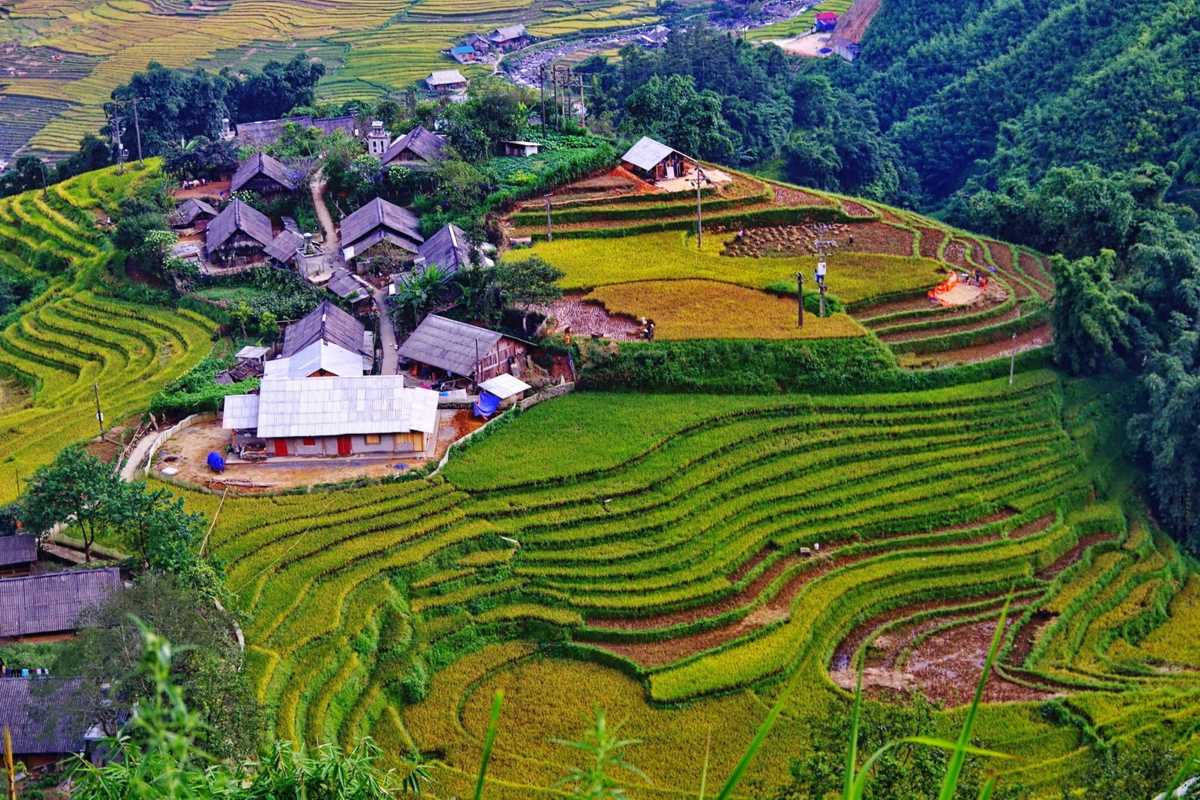
Join in Cultural Workshops and Handicraft Making
Ta Van Village Sapa offers travelers the chance to dive into vibrant cultural workshops, where you can learn traditional arts firsthand. Participating in these activities supports local artisans and keeps cultural heritage alive.
- Hands-on weaving and embroidery sessions led by skilled Giay, Hmong, and Dao artisans
- Opportunities to create traditional patterns using natural dyes
- Crafting lessons that reveal the stories and symbolism behind each design
- Workshops tailored to all skill levels, from beginners to experienced crafters
- Support for community-based tourism and preservation through your participation
Engaging in these workshops not only enriches your trip but also helps sustain the unique artistic traditions of Ta Van.
Weaving, embroidery, and traditional crafts you can try
Explore the beautiful crafts that define Ta Van Village Sapa’s cultural identity through immersive workshops.
- Learn traditional weaving techniques using hand-operated looms
- Create intricate embroidery featuring patterns specific to the Giay, Hmong, and Dao peoples
- Discover the use of natural dyes sourced from local plants and minerals
- Understand artisan techniques passed down through generations
- Appreciate the cultural meaning behind motifs and colors in each craft
These activities give visitors a tactile connection to the heritage of Ta Van and a chance to take home meaningful handmade souvenirs.
Where to book workshops and what to expect
Booking a cultural workshop in Ta Van Village Sapa is straightforward, with options available through homestays or local guides.
- Ask your homestay host about available workshops and scheduling
- Visit local community centers or craft cooperatives offering classes
- Workshops typically last 1–2 hours and include all materials
- Expect friendly, patient instruction from local artisans
- Prepare to learn both practical skills and cultural stories behind the crafts
Booking early, especially during peak season, ensures you don’t miss these enriching experiences that add depth and meaning to your visit.
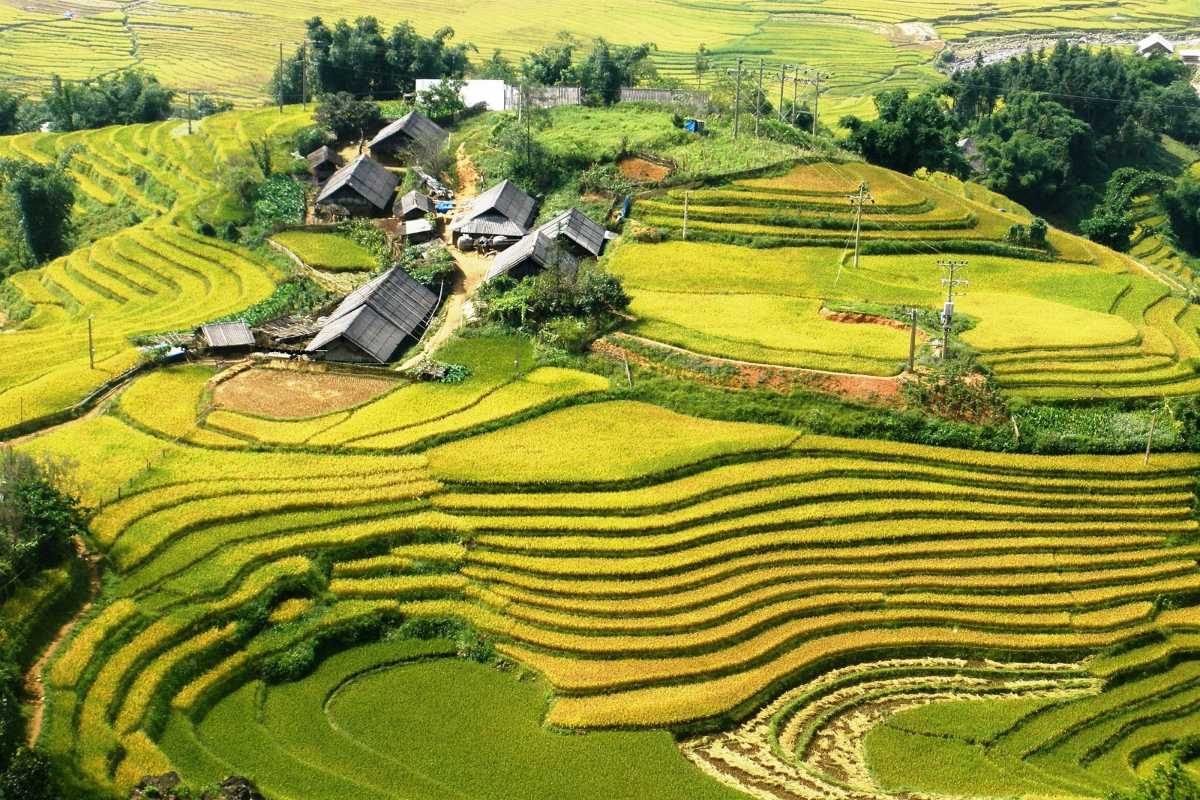
Explore Surrounding Villages and Scenic Spots
Ta Van Village Sapa serves as the perfect base for exploring the wider Muong Hoa Valley and its neighboring villages. Venturing beyond Ta Van lets you experience even more diverse landscapes, cultures, and local charm.
- Discover nearby villages like Ban Ho known for its serene atmosphere and traditional lifestyle
- Visit Su Pan, a village famous for its scenic waterfalls and natural swimming spots
- Explore the broader Muong Hoa Valley, with its stunning terraced rice fields and mountain views
- Enjoy a range of day trip options offering varied activities and cultural insights
Expanding your journey to these nearby areas enriches your visit with new adventures and deeper connections to the region’s rural heart.
Day trips to Ban Ho, Su Pan, and Muong Hoa Valley
If you want to explore more during your stay, several excellent day trips from Ta Van Village Sapa await.
- Ban Ho: Known for its peaceful village life, traditional homes, and opportunities to see local crafts
- Su Pan: Offers refreshing waterfall spots ideal for swimming and relaxing after a trek
- Muong Hoa Valley: Features breathtaking rice terraces and stunning mountain backdrops perfect for photography and hiking
Each destination offers unique landscapes and cultural experiences, making them ideal additions to your itinerary.
Tips for combining villages into a multi-day itinerary
Planning a multi-day trek combining several villages gives you a comprehensive look at the region’s culture and nature.
- Map out a logical route connecting Ta Van, Ban Ho, Su Pan, and other nearby villages
- Arrange accommodations ahead of time, with homestays available in most villages
- Consider hiring a local guide to navigate trails and enrich your cultural understanding
- Use local transport options to move between villages when not trekking
- Allow flexibility in your schedule to fully enjoy each stop without rush
Following these steps ensures a smooth, rewarding multi-village adventure through the heart of Sapa’s valleys.
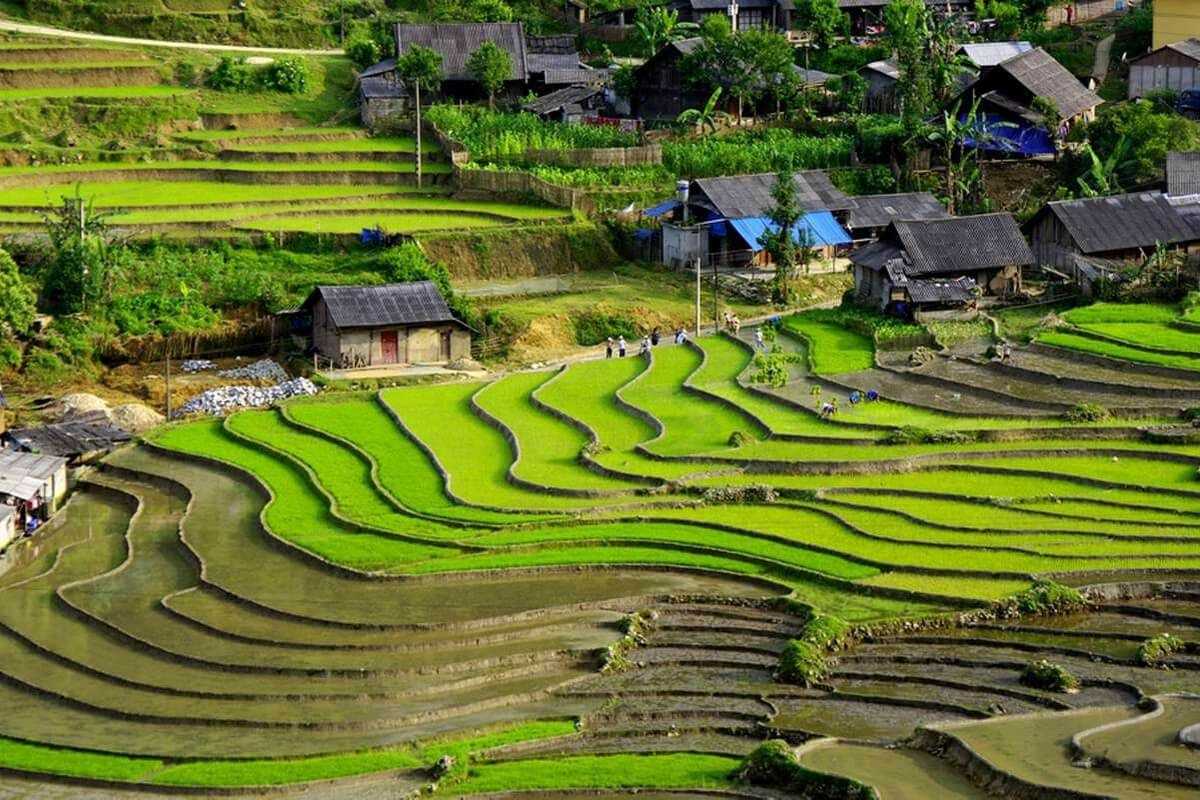
Photography in Ta Van: Best Spots & Tips
Ta Van Village Sapa offers breathtaking photography opportunities for travelers eager to capture its natural beauty and cultural richness. Whether you’re a seasoned photographer or a casual snapper, knowing the best spots and timing can elevate your photos.
- The iconic terraced rice fields offer stunning panoramic views, especially during sunrise and sunset
- Capture the everyday life of villagers, including buffalo grazing and traditional wooden houses
- Look for quiet corners where authentic local moments unfold naturally without crowds
- Practice respectful photo etiquette by asking permission before photographing people or private property
- Use early morning or late afternoon light for softer, more dramatic effects
With a little preparation and respect, your camera will come alive with the vibrant stories and landscapes of Ta Van.
David's Golden Hour Shots: Capturing the Rice Terraces
As a passionate photographer, I've chased light across continents, but my experience capturing the iconic rice terraces of Ta Van Village Sapa during golden hour wasn't just another photo shoot; it was a profound dance with nature's fleeting artistry. Unlike simply pointing and clicking, this was about patience, anticipation, and a deep appreciation for the transformative power of light, yielding images that felt truly alive and unique.
My initial feelings upon arriving in Ta Van were a mix of awe and a healthy dose of photographic ambition. I'd seen countless stunning images of Sapa's terraces, and my expectation was to capture my own version of that magic. The village itself, nestled in the valley, felt like a living canvas, constantly shifting under the play of light and shadow. The air was cool, carrying the scent of damp earth and distant cooking fires, and the sounds were the gentle murmur of the stream and the occasional lowing of a buffalo. I knew the "golden hour photography Sapa" reputation was well-earned, but experiencing it firsthand was another matter entirely.
The journey to capture those perfect shots began with dedication. Each morning, I'd set my alarm for before dawn, pulling on layers against the pre-sunrise chill. Trekking through the still-sleeping village, the only sounds were my footsteps and the occasional rustle of leaves. As the first hints of orange and pink bled into the eastern sky, painting the mist-shrouded peaks, I'd find my vantage point. The challenge was immense: the light changed by the second, fog could roll in unexpectedly, and sometimes, the perfect composition was just out of reach, blocked by a tree or a passing buffalo. There were moments of frustration, certainly, when a cloud would obscure the sun just as the light was perfect, or when my lens fogged up in the humidity. But then, a ray of sunlight would break through, illuminating a patch of vibrant green terraces like a spotlight, and the sheer beauty would take my breath away.
One unforgettable evening, I stayed out long after sunset, waiting for the "blue hour." The sky turned a deep, velvety indigo, and the last remnants of daylight cast a soft, ethereal glow on the water-filled paddies, turning them into shimmering mirrors reflecting the twilight. The village lights began to twinkle below, adding a human element to the vast landscape. It was a moment of pure tranquility and intense focus. I remember the click of my shutter, the cool metal of my camera, and the feeling of being utterly present, lost in the artistic process. The evolving emotional response was a rollercoaster: from the initial excitement of anticipation, through the focused concentration of shooting, to the quiet joy and triumph of knowing I had captured something truly special. This wasn't just about taking pictures; it was about witnessing and preserving the fleeting beauty of Ta Van.
This firsthand involvement in capturing the rice terraces offered unique insights into the art of landscape photography and the rhythm of rural life. I learned that patience is paramount; the best light often appears when you least expect it, or after a long wait. My expertise now includes understanding the subtle nuances of light in mountainous regions and how it interacts with water and foliage. The profound perspective I gained was that the most compelling images often come from observing the small details – a farmer tending to their field, the intricate patterns of the rice paddies, the way light catches a single leaf – not just the grand vista. These rice terraces photo tips are born from countless hours spent waiting and watching.
Here are my actionable takeaways for capturing unforgettable photos in Ta Van Village Sapa:
- Embrace the Golden & Blue Hours: Aim to shoot during sunrise (approx. 30 mins before to 1 hour after) and sunset (1 hour before to 30 mins after). The soft, warm light is magical.
- Look for Details, Not Just Vistas: While wide shots are stunning, zoom in on the textures of the rice plants, the reflections in the water, a farmer at work, or a buffalo grazing. These add depth and narrative.
- Be Prepared for Weather Changes: The weather in Sapa is notoriously unpredictable. Pack a rain cover for your camera and wear waterproof clothing. Fog can create incredibly atmospheric shots, so don't be deterred.
- Respect Local Privacy: When photographing people, especially children or those working, always ask for permission (a smile and a gesture with your camera usually suffice). Be mindful and respectful.
- Bring a Tripod: For low-light shots during blue hour or for capturing long exposures of misty landscapes, a lightweight travel tripod is invaluable.
- Scout Locations: If possible, do a quick scout during the day to identify potential compositions and vantage points for your golden hour shoots.
- Clean Your Lens: Dust and humidity can be issues. Carry a lens cloth and cleaner.
My time chasing light in Ta Van was a photographer's dream, a testament to the fact that the most rewarding images often require effort, patience, and a deep connection to the subject.
Recommendation: If you have even a passing interest in photography, make sure to dedicate time to capturing the rice terraces of Ta Van Village Sapa during golden hour. The effort is minimal compared to the breathtaking, truly unique images you'll bring home.
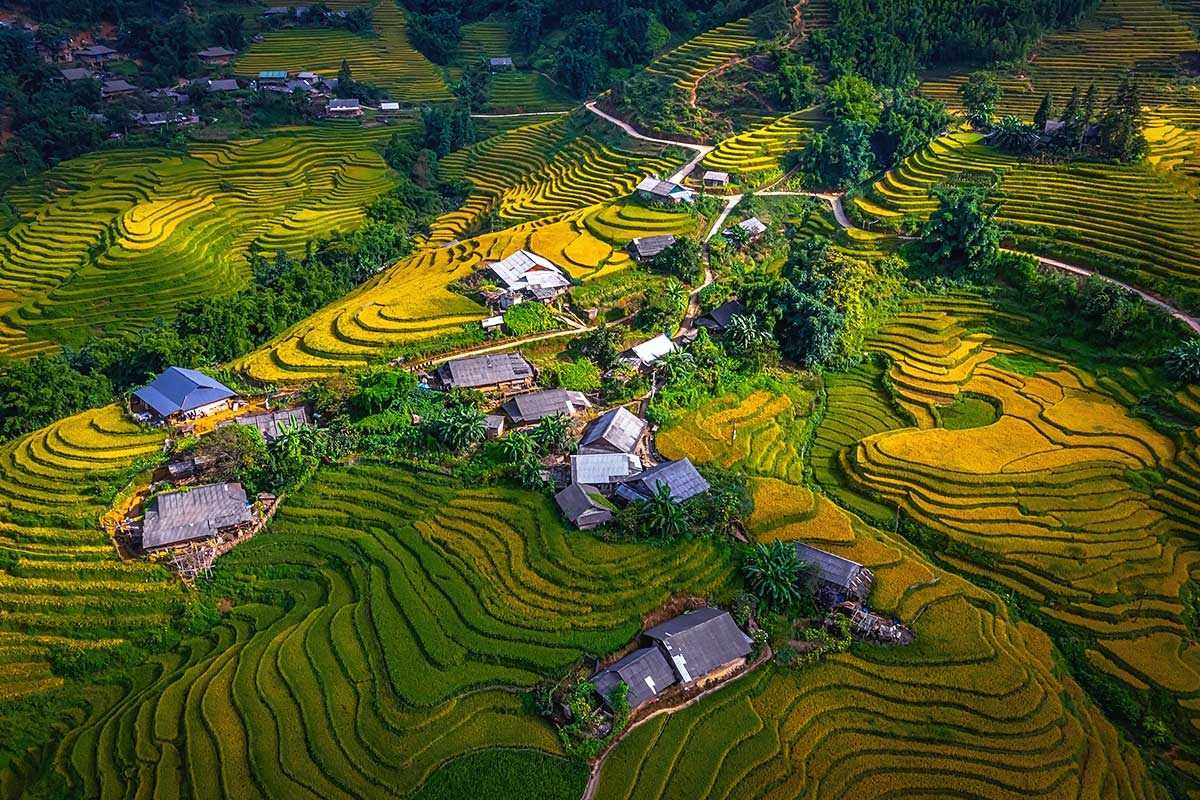
Connecting with Locals: Beyond the Homestay
Building genuine relationships in Ta Van Village Sapa goes beyond staying in a homestay; it involves respectful, meaningful interaction with the community. Engaging sincerely enhances your travel experience and supports cultural preservation.
- Learn basic local greetings to break the ice and show respect
- Offer small, thoughtful gifts when appropriate, avoiding anything extravagant or intrusive
- Participate in community events or daily activities when invited to deepen your understanding
- Use local guides who can facilitate connections and explain customs to avoid misunderstandings
- Always respect privacy and personal space; observe before asking to join in
By approaching your visit with openness and respect, you’ll create authentic memories and support the community’s cultural heritage.

Seasonal Highlights – When to Visit for the Best Experience
Timing your trip to Ta Van Village Sapa can greatly enhance your experience, whether you’re drawn by the stunning landscapes, weather conditions, or vibrant local festivals. Understanding the seasonal changes helps you pick the perfect moment for your visit.

Ta Van Through the Seasons: What’s Unique Each Time of Year?
Each season in Ta Van Village Sapa offers distinct experiences, from vibrant landscapes to cultural activities. Knowing what to expect during each period will help you plan the best time to visit.
Rice terrace colors: planting, growing, and harvest
The iconic rice terraces of Ta Van Village Sapa transform throughout the year, creating breathtaking vistas and signaling different phases of rural life. Knowing these phases helps travelers capture the perfect moments.
- March to May: "Mirror season" with water-filled paddies reflecting the sky, offering stunning reflections
- June to August: Lush green terraces during the growing season, vibrant and alive
- September to October: Golden yellow hues mark the harvest season, a time of celebration and abundance
- November to February: Brown and bare terraces during the dormant season, a quieter time with a different beauty
Each phase brings unique activities and scenic highlights that make every visit memorable.
Weather patterns and what they mean for your trip
Weather in Ta Van Village Sapa varies by season and can affect trekking conditions, comfort, and visibility. Being prepared for these patterns ensures a smoother and more enjoyable trip.
- Spring and early summer bring moderate temperatures with occasional rainfall, ideal for trekking
- Monsoon season can cause heavy rain and muddy trails, requiring waterproof gear and caution
- Autumn offers crisp, clear days with comfortable temperatures and vibrant foliage colors
- Winter is cool and can be foggy or misty, creating atmospheric views but requiring warm clothing
Understanding these patterns helps travelers plan packing and daily activities effectively.

Can’t-Miss Events and Festivals by Month
Ta Van Village Sapa hosts a variety of vibrant festivals and cultural events throughout the year, making it a fantastic destination for travelers seeking authentic experiences. Planning your visit around these special occasions offers a unique window into the community’s traditions and celebrations. From the lively Sapa New Year festival to seasonal harvests and weekly market days, each event brings rich cultural displays that are both memorable and immersive.
New Year, harvest, and community market days
The major festivals and market days in Ta Van Village Sapa mark important moments in the community’s cultural and agricultural calendar. These celebrations combine traditional rituals, music, dance, and vibrant market activities, offering visitors a front-row seat to the local way of life.
- Sapa New Year festival: Celebrated in late January or February, this event brings joyful ceremonies welcoming the new lunar year with traditional music and dance.
- Harvest festival: Occurring in September or October, the rice harvest is a time of communal gratitude, featuring special ceremonies and feasts.
- Community market days: Held weekly, these markets are hubs for socializing and trading local produce, crafts, and foods.
Attending these events offers travelers a genuine cultural immersion and the chance to witness age-old customs in full swing.
How to join as a visitor and what to bring
Joining festivals and market days in Ta Van Village Sapa requires understanding local customs to show respect and fully enjoy the experience. Visitors should prepare thoughtfully to engage meaningfully with the community.
- Learn a few basic greetings or phrases in Vietnamese or local languages to connect warmly with hosts.
- Bring small, thoughtful gifts such as local crafts or food items, which are appreciated in traditional celebrations.
- Dress modestly and in accordance with local customs, especially during sacred ceremonies.
- Follow event etiquette, such as asking permission before taking photos and respecting the flow of rituals.
With these simple preparations, travelers can participate respectfully and create lasting positive memories.

Practical Travel Tips for a Smooth Stay
Traveling to Ta Van Village Sapa offers a rewarding experience, but being well-prepared ensures your trip is smooth and enjoyable. This section provides essential advice on packing, staying healthy, budgeting, and communication, tailored specifically for the rural, mountainous environment of Ta Van. With practical tips and clear guidance, you can avoid common challenges and focus on immersing yourself in the local culture and natural beauty.

Packing Smart: Essentials for Your Ta Van Adventure
Preparing for your visit to Ta Van Village Sapa means packing for the diverse mountain weather and rural conditions you'll encounter. Packing smart reduces stress and ensures comfort so you can focus on your adventure. This checklist covers all essential categories so you don’t forget a thing.
Clothing, gear, and tech for all weather conditions
When visiting Ta Van Village Sapa, expect variable mountain weather that can shift quickly from sun to rain. Packing versatile clothing and essential gear is key to comfort and safety. Here’s what to bring for all conditions:
- Layered clothing: breathable base layers, warm mid-layers, and waterproof outer layers
- Comfortable trekking shoes with good grip
- Hat and sunscreen for sun protection
- Insect repellent to guard against mosquitoes
- Power bank for charging devices on the go
- Universal travel adapter
- Headlamp or flashlight for evenings and power outages
- Small day backpack for essentials on treks
With this gear, you’ll be ready for whatever the weather brings and can enjoy your adventures fully prepared.
Cash, cards, and communication – what you need to know
Managing money and staying connected in Ta Van Village Sapa requires some preparation. Electronic payments are rare, so plan accordingly to avoid inconvenience.
- Bring sufficient cash in Vietnamese Dong; smaller denominations are preferred for daily purchases
- ATMs are available only in Sapa Town, so withdraw cash before heading to Ta Van
- Inform your bank about international travel to avoid card blocks
- Download offline maps and translation apps to navigate and communicate without internet
- Be prepared to break large bills in Sapa Town before traveling to Ta Van, where shops may not accept them
By planning ahead, you’ll avoid payment hassles and stay connected enough to enjoy your trip worry-free.

Staying Healthy and Safe in the Village
When visiting Ta Van Village Sapa, staying healthy and prepared for any minor mishaps ensures your trip remains enjoyable and stress-free. This section provides essential health and safety advice tailored to the rural mountain environment, helping you anticipate challenges and act confidently if emergencies arise.
- Understand local healthcare resources and how to access them quickly
- Carry a basic first-aid kit with common medications and supplies
- Practice good hygiene to prevent illness, especially regarding water and food
- Know emergency contact numbers and nearest medical facilities
By following these guidelines, you can focus on the rich cultural and natural experiences of Ta Van without worrying about health setbacks.
Local healthcare resources and emergency contacts
Access to reliable healthcare is vital when traveling in Ta Van Village Sapa, especially given its remote location. Knowing where to turn in case of illness or injury can provide peace of mind.
- Nearest clinics and hospitals are located in Sapa Town, approximately 10 km away
- Emergency phone numbers to keep handy include local police and ambulance services
- Carrying a small, personal first-aid kit can address minor injuries or ailments
- Inform your accommodation about any health concerns so they can assist if needed
Being informed and prepared ensures you can respond quickly and appropriately in emergencies, allowing you to enjoy your visit safely.
Hygiene, water, and food safety pointers
Maintaining good hygiene and food safety in Ta Van Village Sapa helps prevent common travel illnesses and keeps your body strong throughout your trip.
- Always drink bottled or purified water; avoid tap water
- Wash hands thoroughly before meals and after using restrooms
- Be cautious with street food; choose busy vendors with high turnover for freshness
- Avoid raw or undercooked dishes if you have a sensitive stomach
- Carry hand sanitizer for times when soap and water are unavailable
Following these simple habits reduces health risks and ensures your energy stays high for exploring the village and surrounding areas.

Navigating the Language Barrier
In Ta Van Village Sapa, English is not widely spoken, which can make communication challenging for travelers. However, with a few essential phrases and modern tools, you can easily connect with locals and enrich your experience. Knowing how to bridge this language gap not only reduces anxiety but also opens doors to genuine cultural exchange.
- Learn basic Vietnamese greetings and expressions to show respect and friendliness
- Familiarize yourself with simple Hmong or Giay phrases common in Ta Van
- Use offline translation apps that work without internet, such as Google Translate
- Employ universal gestures like smiling, nodding, or pointing to communicate effectively
By preparing these language tools and embracing gestures, you’ll navigate interactions smoothly and deepen your connection with the local community.
Common phrases and greetings in local languages
When visiting Ta Van Village Sapa, mastering a handful of local phrases can greatly enhance your interactions and show respect to the community.
- “Xin chào” (sin chow) – Hello in Vietnamese
- “Cảm ơn” (gahm un) – Thank you
- “Bao nhiêu tiền?” (bow nyew tee-en) – How much does it cost?
- Basic Hmong greetings such as “Nyob zoo” (hello)
- Simple Giay expressions for polite conversation
Practicing these phrases with phonetic pronunciation helps build rapport and makes daily exchanges smoother. Locals appreciate the effort, which often leads to warmer welcomes.
Using translation apps and gestures
Technology and non-verbal cues are invaluable when exploring Ta Van Village Sapa without fluent language skills.
- Download translation apps like Google Translate with offline language packs before your trip
- Use simple gestures such as pointing, nodding, or showing numbers on fingers
- Combine app translations with pictures or written words for clarity
- Maintain a friendly and patient demeanor to ease communication barriers
These methods ensure you can ask questions, give directions, and enjoy meaningful conversations even when words fail.

Budgeting for Ta Van: Costs & Money-Saving Tips
Planning your finances for a trip to Ta Van Village Sapa is key to enjoying the experience without stress. Understanding typical expenses helps you allocate your budget wisely and discover smart ways to save while immersing yourself in the local culture.
- Accommodation in Ta Van Village ranges from basic homestays at affordable rates to slightly more comfortable options, usually costing between $10–$30 per night
- Meals featuring authentic local cuisine are fresh and budget-friendly, with home-cooked dishes often priced under $5
- Hiring local guides for trekking or cultural tours generally costs around $10–$20 per day, supporting community livelihoods
- Purchasing handicrafts directly from artisans offers unique souvenirs while contributing fairly to the local economy
- Walking or renting motorbikes can save transportation costs compared to taxis
By budgeting thoughtfully and embracing local options, you’ll get the most value from your Ta Van adventure without compromising comfort or authenticity.
Tom's Budget Breakdown: A Week in Ta Van
When planning a trip to a seemingly remote destination like Ta Van Village Sapa, one of the biggest unknowns is often the actual cost. Most guides offer vague estimates, but my recent week-long immersion provided a real-world, day-by-day expense account that goes beyond averages. This wasn't just about spending money; it was about understanding where my money went, how to maximize my experience without breaking the bank, and truly appreciating the affordability of authentic travel in rural Vietnam.
My initial feelings about budgeting for Ta Van were a mix of cautious optimism and a slight worry about hidden costs. I knew homestays were generally affordable, but what about food, activities, and getting around? My expectation was to keep things simple and local, aiming for a budget-friendly trip. The moment I arrived in Ta Van, the peaceful atmosphere and the genuine warmth of the locals immediately signaled that this wouldn't be a place for extravagant spending, but rather for investing in experiences.
The journey of my budget unfolded day by day, revealing the true cost of living and traveling in the village.
- Day 1: Arrival & Settling In (Approx. 350,000 VND / $14 USD)
- Taxi from Sapa Town to Ta Van: 150,000 VND (shared with another traveler)
- Homestay (per night, including dinner & breakfast): 150,000 VND
- Water & small snacks from local shop: 50,000 VND
- Insight: Transport was the biggest initial cost, but once in Ta Van, expenses dropped significantly.
- Day 2: Trekking & Local Cuisine (Approx. 280,000 VND / $11 USD)
- Local guide fees Ta Van (half-day trek, shared): 150,000 VND
- Lunch at a small local eatery: 50,000 VND
- Homestay (dinner & breakfast included): 150,000 VND (already paid)
- Water & fruit: 30,000 VND
- Insight: Hiring a local guide was incredibly valuable and surprisingly affordable, enhancing the experience tenfold.
- Day 3: Cultural Immersion & Handicrafts (Approx. 380,000 VND / $15 USD)
- Homestay (dinner & breakfast included): 150,000 VND (already paid)
- Small handicraft purchase (embroidered pouch): 80,000 VND
- Cooking class with homestay (optional contribution/tip): 50,000 VND
- Coffee at a small village cafe: 20,000 VND
- Water: 30,000 VND
- Insight: Sapa handicraft shopping was tempting, but I focused on small, authentic pieces directly from artisans, ensuring my money directly supported them.
- Day 4-6: Exploring & Flexibility (Approx. 200,000 - 300,000 VND / $8-12 USD per day)
- These days involved more self-guided walks, reading, and simply soaking in the atmosphere. My main costs were homestay (paid), water, and occasional snacks or an extra coffee. I might have bought another small souvenir or tried a different local dish for lunch.
- Insight: Once settled, daily expenses were incredibly low, allowing for a truly relaxed pace.
- Day 7: Departure (Approx. 150,000 VND / $6 USD)
- Homestay (breakfast included): 150,000 VND (already paid)
- Taxi from Ta Van to Sapa Town: 150,000 VND (shared)
- Insight: Departure costs mirrored arrival, straightforward and predictable.
My total for a week, excluding my initial transport to Sapa and major purchases, came out to roughly 2,000,000 VND ($80 USD), averaging about 285,000 VND ($11.50 USD) per day. This felt incredibly affordable for such a rich, immersive experience. The emotional response was one of pleasant surprise and deep satisfaction, realizing how much value I received for my money.
This firsthand budget breakdown offered unique insights into the true cost of authentic travel. I learned that the perceived "remoteness" of Ta Van actually contributes to its affordability, as it's less geared towards mass tourism. My expertise now includes practical strategies for keeping costs low while maximizing cultural engagement. The profound perspective gained was that you don't need a large budget to have a deeply enriching and memorable travel experience; often, the most valuable moments are free.
Here are my actionable money-saving tips for your Ta Van Village Sapa adventure:
- Embrace the Homestay: This is by far the most cost-effective accommodation, often including two meals a day. It's also the best way to experience local life.
- Eat Local: Stick to homestay meals and small village eateries. They are delicious, authentic, and incredibly cheap. Avoid tourist-centric restaurants in Sapa Town.
- Walk or Motorbike: For short distances, walk. For longer trips within the valley, local motorbike taxis (xe om) are much cheaper than private cars. Consider renting a motorbike if you're comfortable and licensed.
- Bargain Respectfully: For handicrafts or larger purchases, a little respectful bargaining is acceptable, but don't push too hard. Remember, this is often their livelihood.
- Carry a Reusable Water Bottle: Refill at your homestay if possible, or buy large bottles of water to reduce plastic waste and save money on smaller ones.
- Focus on Experiences, Not Souvenirs: While Sapa handicraft shopping is tempting, prioritize unique experiences like trekking with a local guide or participating in a cooking class over excessive souvenir buying.
My week in Ta Van proved that an incredible, immersive travel experience doesn't have to break the bank. It was a testament to the value of simplicity and genuine connection.
Recommendation: Don't let budget concerns deter you from visiting Ta Van Village Sapa. With a little planning and a willingness to live like a local, you can have an incredibly rich and affordable adventure that will leave you with cherished memories.

Sustainable Tourism – Travel Kindly in Ta Van
Traveling responsibly in Ta Van Village Sapa not only enriches your experience but also supports the community and preserves the environment for future generations. Embracing sustainable tourism means choosing options that directly benefit local families, protect cultural heritage, and minimize ecological footprints. By being mindful, you help ensure that the unique charm of Ta Van continues to thrive authentically.

How Your Visit Supports the Community
Your visit to Ta Van Village Sapa has a meaningful impact on local families and the preservation of their culture. Responsible tourism helps create sustainable income through homestays, guided tours, and handicraft sales, fostering economic growth while safeguarding traditions and the environment. Choosing mindful travel options empowers the community and encourages cultural pride.
- Supporting family-run homestays strengthens local livelihoods
- Hiring community guides ensures fair income distribution
- Purchasing crafts directly helps preserve traditional skills
- Contributions aid environmental conservation and village development
By traveling responsibly, you become part of a positive cycle that uplifts the people and culture of Ta Van Village.
The impact of community-based tourism
Community-based tourism in Ta Van Village Sapa channels your spending directly to families, craftspeople, and guides, preserving cultural traditions and natural landscapes. Homestays and local businesses thrive thanks to visitors who choose ethically. This form of tourism nurtures family income, protects the environment, and keeps the village’s cultural fabric intact.
- Family incomes are supplemented by homestay bookings and local services
- Traditional crafts and practices receive continued support and recognition
- Environmental efforts benefit from sustainable tourism funding
- Positive testimonials from villagers confirm the benefits
Choosing community-based tourism means your visit creates lasting value for both the people and the place.
Choosing responsible tours and homestays
Selecting responsible tours and homestays in Ta Van Village Sapa requires awareness and careful choice. Look for operators who offer fair wages, are locally owned, and prioritize environmental care. Asking key questions before booking helps ensure your travel supports sustainable practices and respects local customs.
- Verify that guides and hosts receive fair compensation
- Prefer tours managed by local community members
- Choose accommodations that follow eco-friendly practices
- Inquire about the operator’s commitment to cultural respect
By making informed choices, you contribute to ethical tourism that benefits everyone involved.

Green Travel Tips for Visitors
Travelers to Ta Van Village Sapa can make a positive impact by adopting green travel habits that protect the environment and respect local culture. Simple choices help reduce waste and preserve the village’s natural beauty, ensuring this destination remains vibrant for years to come. Embrace eco-friendly practices to travel kindly and leave a lighter footprint.
- Carry reusable water bottles to reduce plastic waste
- Avoid single-use plastics and bring reusable bags
- Support local products to boost sustainable livelihoods
- Follow local dress codes and respect privacy
- Dispose of waste properly, using designated bins or carrying trash out
By following these tips, you contribute to sustainable tourism that honors both nature and community.
Minimizing waste and respecting local customs
Reducing waste and honoring local customs in Ta Van Village Sapa are key to responsible travel. Visitors can protect the environment while showing respect for the community by adopting mindful habits. Being aware of cultural norms also enriches your experience and builds goodwill.
- Use refillable bottles and avoid plastic packaging
- Dispose of trash in designated spots or take it with you
- Dress modestly according to local customs and traditions
- Respect villagers’ privacy; ask before photographing or entering homes
- Support vendors who practice eco-friendly methods
Travelers who minimize waste and embrace local customs help preserve Ta Van’s charm and foster meaningful cultural exchange.
How to tread lightly on trails and in the village
Exploring the natural beauty and community of Ta Van Village Sapa calls for gentle, low-impact behavior to protect both environment and residents. Staying mindful on trails and in the village ensures that your visit is positive for everyone involved.
- Stick to marked trails to avoid damaging plants and wildlife habitats
- Do not pick flowers, plants, or disturb animals
- Keep noise levels low to respect wildlife and villagers
- Avoid littering; carry out what you bring in
- Be patient and courteous with local residents and fellow travelers
By treading lightly, you help keep Ta Van’s landscapes pristine and its community harmonious for future visitors.

Local Voices: Stories from Residents and Hosts
Hearing directly from the people of Ta Van Village Sapa offers invaluable insight into how tourism shapes daily life and community hopes. These local voices reveal the balance between embracing visitors and preserving traditions, providing travelers with a deeper understanding of the village beyond the surface.
- Locals share the economic benefits tourism brings alongside concerns over cultural changes
- Homestay hosts emphasize the pride in welcoming guests and sharing their heritage
- Artisans discuss how tourism supports traditional crafts and motivates younger generations
- Elders reflect on the challenge of maintaining customs amid modernization
By listening to these stories, travelers gain respect for the community’s efforts and feel encouraged to engage thoughtfully and responsibly.
Personal insights on tourism, change, and hope for the future
Residents of Ta Van Village Sapa share heartfelt reflections on how tourism has transformed their lives, bringing both opportunities and challenges. Their stories reveal a community striving to balance economic growth with cultural preservation, looking ahead with cautious optimism.
- “Tourism brings income but also changes our way of life,” says a local elder
- Hosts express pride in sharing traditions but worry about younger generations losing connection
- Artisans hope that visitor interest will keep handicrafts alive
- Community leaders emphasize education and sustainable tourism as keys to a positive future
These insights highlight a village navigating change with resilience and hope, inviting travelers to be part of a respectful, supportive journey.

What Other Travelers Are Saying
Listening to fellow travelers’ experiences can provide invaluable insights into Ta Van Village Sapa. Real stories reveal both the magic and realities of visiting, helping new visitors set expectations and get excited about their own journey. These candid perspectives build trust and offer practical tips from those who have walked the trails and stayed in the homestays.

Inspiring Stories and Tips from Fellow Visitors
Visitors to Ta Van Village Sapa often share memorable stories and practical advice that can help newcomers make the most of their trip. From cultural exchanges to trekking surprises, these firsthand accounts offer guidance and spark inspiration for planning.
- Many travelers praise the warmth of local homestay families and the stunning rice terraces
- Guests highlight meaningful cultural interactions and authentic experiences beyond typical tours
- Advice includes packing for unpredictable weather and hiring local guides for deeper insights
By learning from others’ journeys, new visitors feel more prepared and motivated to dive into Ta Van’s unique charm.
Favorite moments and must-do experiences
Many visitors find certain moments in Ta Van Village Sapa unforgettable. These highlights capture the essence of the village’s appeal and are often recommended as must-do experiences.
- Staying in a homestay and sharing meals with welcoming families
- Trekking through emerald rice terraces and crossing suspension bridges
- Engaging in cultural exchanges and learning local crafts
- Witnessing breathtaking sunrise or sunset views over the valley
These experiences create lasting memories and are often described as the heart of visiting Ta Van.
Common surprises and things to watch out for
Visitors often share candid advice about unexpected aspects of Ta Van Village Sapa to help future travelers prepare and enjoy the experience fully.
- Limited modern amenities and rustic conditions can surprise first-timers
- Early morning starts with village life’s natural sounds
- Persistent local vendors seeking to sell crafts or services
- Variable weather affecting trekking and comfort
Knowing these realities in advance helps visitors embrace the experience with open minds and practical strategies.

Honest Reviews: The Highs and Lows
Getting a balanced picture of Ta Van Village Sapa helps travelers prepare for both the highlights and the challenges of their visit. Real reviews from previous guests reveal what delights visitors and what might need improvement. This transparency builds trust and helps readers make informed decisions about their trip.
- Guests consistently praise the warm hospitality and immersive cultural experiences of local homestays
- Many appreciate the stunning natural scenery and peaceful atmosphere, perfect for trekking and photography
- Some reviews mention limited modern amenities, basic facilities, and occasional communication barriers
- Feedback often notes the value of hiring knowledgeable local guides to enhance the visit
Knowing both strengths and weaknesses allows future visitors to set realistic expectations and enjoy their journey fully.
Feedback on homestays, guides, and activities
Visitors consistently share specific praise and critiques regarding services in Ta Van Village Sapa, helping others choose the best experiences.
- Homestays: Loved for authentic cultural immersion, friendly hosts, and home-cooked meals; some note rustic facilities and basic comforts
- Local guides: Highly recommended for safety, knowledge of trails, and cultural insights; quality can vary, so checking reviews is advised
- Activities: Trekking routes and cultural workshops receive praise for being well-organized and engaging; occasional concerns over weather conditions and physical demands
This feedback helps travelers prioritize what matters most and avoid surprises during their stay.
Tips for making the most of your trip
Drawing on the collective wisdom of past visitors, these insider tips help newcomers maximize their Ta Van Village Sapa experience.
- Be open-minded and embrace the simplicity and rustic charm of village life
- Hire a local guide for deeper cultural understanding and safer trekking
- Pack appropriately for changing weather and rugged terrain
- Engage with locals respectfully, learning a few basic phrases to build connection
- Allow time for quiet moments to appreciate the stunning scenery and village rhythms
Following these tips enriches the visit and fosters meaningful cultural exchange.

Common Misconceptions About Ta Van Village
Many travelers hold misconceptions about Ta Van Village Sapa that can lead to unrealistic expectations. It’s important to clarify these myths to help future visitors prepare for an authentic and respectful experience. Unlike some tourist spots, Ta Van is not a luxury resort but a vibrant rural community with genuine local life. While it offers stunning natural beauty and cultural richness, amenities remain basic, reflecting its traditional lifestyle. Visitors should understand that the village is evolving but still retains its authenticity, which means embracing simplicity over comfort. By dispelling these myths, travelers can appreciate Ta Van’s true charm and approach their visit with openness and respect.
Emily's Reality Check: What Ta Van Isn't
Before I arrived in Ta Van Village Sapa, my mind was filled with romanticized images: a completely untouched, silent paradise, villagers living exactly as they had for centuries, utterly isolated from the modern world. Most travel blogs paint a picture of pristine, almost mythical authenticity. My journey to Ta Van, however, became a crucial reality check, not in a disappointing way, but in a way that deepened my appreciation for the true, living essence of the village. This wasn't just another trip; it was a lesson in understanding that "authentic" doesn't always mean "frozen in time."
My initial feelings were a blend of starry-eyed idealism and a genuine desire to experience true rustic village life. I envisioned absolute quiet, perhaps even a sense of stepping back centuries. The air, as I descended into the Muong Hoa Valley, was indeed fresh and carried the scent of wet earth and distant woodsmoke, fulfilling some of my sensory expectations. But as our motorbike entered Ta Van, the first "jolt" to my preconceived notions arrived: other motorbikes. Not many, but enough to signal that this wasn't quite the completely isolated haven I'd imagined.
The journey of my "reality check" unfolded subtly over my stay. I quickly realized that while Ta Van is undeniably charming and far less developed than Sapa Town, it isn't a museum. My homestay, while traditional in structure, had solar panels providing electricity, a basic but functional flush toilet, and even intermittent Wi-Fi. The sounds weren't just the gentle murmur of the stream; they included the occasional whir of a small generator, the distant hum of a motorbike, and the lively chatter of children playing, sometimes with plastic toys.
I saw villagers using mobile phones, wearing a mix of traditional and modern clothing, and occasionally watching television. This wasn't the "primitive" existence I had perhaps unconsciously expected. There were other tourists too, sometimes in small groups, sometimes solo like me, all seeking their own version of "Sapa authenticity." This wasn't a bad thing; it was simply the Sapa reality vs expectation. It was a living, breathing community that, like any other, was adapting and evolving, integrating elements of modernity while fiercely holding onto its core traditions. The real authenticity, I discovered, lay not in a lack of modernity, but in the resilience of culture in the face of change, in the genuine warmth of the people, and in the timeless beauty of the landscape that remained largely untouched. My emotional response shifted from initial surprise to a deeper, more nuanced appreciation for this dynamic blend.
This firsthand experience offered unique insights. My expertise now includes understanding that "authenticity" in travel is rarely about finding a place untouched by time; it's about connecting with a culture that is vibrantly alive, adapting, and welcoming. The profound perspective I gained was that true immersion comes from accepting a place for what it is, not what you idealize it to be. Ta Van isn't a performance; it's simply life, lived beautifully.
Here are my actionable tips for approaching Ta Van Village Sapa with the right mindset:
- Manage Expectations: Ta Van is rustic and traditional, but not entirely isolated or primitive. Expect basic comforts and a blend of old and new.
- Embrace the Sounds of Life: The village is alive with the sounds of animals, children, and daily activities. It's not a silent retreat, but a vibrant community.
- Authenticity is Evolving: The Sapa authenticity you experience is in the living culture, the genuine hospitality, and the enduring traditions, even as the community adapts to tourism.
- Be Prepared for Basic Amenities: While homestays are comfortable, don't expect luxury. Showers might be cold or lukewarm, and power might occasionally flicker.
- Focus on Connection: The true magic of Ta Van lies in the interactions with your host family and other locals. Prioritize these over seeking an idealized "untouched" environment.
- It's Not a Theme Park: Villagers are living their lives. Be respectful, observe, and engage when appropriate, but remember you are a guest in their home.
My reality check in Ta Van was ultimately a gift. It stripped away my romanticized notions and allowed me to connect with the village on a deeper, more honest level. It showed me the beauty of a culture that thrives, not despite, but often alongside, the gentle currents of modernity.
Recommendation: Go to Ta Van Village Sapa not with a fixed idea of what it should be, but with an open heart and mind. Embrace its genuine, evolving nature, and you'll find an authentic, unforgettable experience that surpasses any idealized expectation.

Ready to Plan Your Ta Van Adventure? Let’s Make It Happen!
Planning your trip to Ta Van Village Sapa is an exciting step toward an unforgettable cultural and natural experience. To help you book your stay and activities with confidence, here’s a straightforward guide to get you started. Whether you prefer homestays or guided tours, having the right resources and tips will make your journey seamless and stress-free. By following these steps, you’ll be ready to immerse yourself fully in the beauty and traditions of Ta Van Village.

Simple Steps to Book Your Stay and Activities
Booking your accommodation and experiences in Ta Van Village Sapa doesn’t have to be complicated. Follow these easy steps to secure your spot and make the most of your visit:
- Research homestays and tours online, focusing on those with strong reviews and authentic local hosts.
- Use trusted booking platforms or contact homestays directly to check availability.
- Compare tour options for trekking, cultural workshops, and local experiences to fit your interests.
- Confirm your bookings well in advance, especially during peak seasons, to avoid disappointment.
- Prepare necessary documents and payments, considering local payment preferences like cash for homestays.
These steps help ensure a smooth booking process, allowing you to focus on what really matters—experiencing Ta Van Village Sapa fully and authentically.
Where to find the best deals and reviews
Finding reliable deals and honest reviews is key to a great trip in Ta Van Village Sapa. Consider these trusted resources:
- Booking.com and Agoda for verified homestay listings with user ratings.
- Tripadvisor and Lonely Planet forums for firsthand traveler feedback.
- Local tourism websites featuring recommended operators and special offers.
- Social media groups dedicated to Sapa travel for up-to-date tips and experiences.
Using these sources will help you make informed choices and uncover hidden gems for your stay and activities.
Trusted websites and booking tips
To book confidently and avoid scams in Ta Van Village Sapa, keep these tips in mind:
- Prefer direct bookings with hosts or well-known platforms to ensure secure transactions.
- Ask questions about amenities, location, and cancellation policies before finalizing.
- Check recent reviews focusing on cleanliness, hospitality, and authenticity.
- Use local tour operators vetted by the community for guided treks and cultural experiences.
These simple actions protect your investment and enhance your overall travel experience.

Extra Resources to Fuel Your Planning
For a successful trip to Ta Van Village Sapa, having access to reliable resources can make all the difference. These tools and contacts provide valuable guidance, helping you navigate, connect with experts, and plan a personalized itinerary. Whether you’re looking for detailed maps, traveler discussions, or trusted local guides, these resources empower you to travel with confidence and make the most of your visit.
Links to maps, travel forums, and local guides
Navigating Ta Van Village Sapa and its surroundings is easier with the right tools. Here are essential resources to help you explore effectively:
- Detailed digital and printable maps showing trekking routes and village layouts.
- Active Sapa travel forums where experienced visitors share tips and updates.
- Contact lists for local guides offering authentic cultural and trekking experiences.
- Online communities focused on rural Vietnam travel for insider advice.
Using these resources ensures you stay informed, find hidden gems, and enjoy a smooth travel experience.
Contact info for questions and personalized advice
Planning a trip is easier when you can get personalized support. For tailored recommendations and answers about Ta Van Village Sapa:
- Reach out to local tourism offices or homestay hosts via official websites or email.
- Connect with experienced travel bloggers or community forums specializing in Sapa.
- Use contact forms on trusted travel websites for itinerary planning assistance.
- Engage on social media groups dedicated to Vietnam travel to ask specific questions.
Getting direct advice helps customize your journey to your preferences and ensures a more rewarding adventure.

Share Your Ta Van Experience with Us!
We invite you to become a part of the Ta Van Village Sapa travel community by sharing your own stories, tips, and photos. Your unique experiences help others discover the authentic charm of this village and foster a vibrant, supportive network of travelers. Whether you’ve found a favorite homestay, uncovered a hidden trail, or enjoyed local festivals, your voice matters.
Join the conversation by leaving comments, posting on social media with our hashtag, or submitting your travel stories directly. Together, we can celebrate and preserve the spirit of Ta Van Village Sapa while inspiring future adventurers to explore respectfully and meaningfully. Share your journey and connect with fellow explorers today!
Nhật Hoàng
Faqs
Ta Van Village Sapa is known for its authentic ethnic culture, stunning terraced rice fields, and immersive rural experiences. It is a vibrant community where visitors can explore the traditions of the Giay, Hmong, and Dao people while enjoying spectacular natural scenery.
The village offers:
- Traditional homestays providing cultural immersion.
- Scenic trekking routes through the Muong Hoa Valley rice terraces.
- Unique opportunities to experience local festivals and handicrafts.
Discover the charm of Ta Van Village Sapa and enjoy an enriching blend of nature and culture on your visit.
To reach Ta Van Village Sapa from Sapa Town, travelers have several options that vary by budget and adventure level. The village lies approximately 8 kilometers southwest of Sapa Town, accessible by road or trekking paths.
Common ways include:
- Hiring a private car or taxi from Sapa Town for a comfortable 20-30 minute drive.
- Renting a motorbike or using local xe om (motorbike taxis) for flexible transport.
- Trekking via popular routes through Lao Chai Village, which takes about 3-4 hours on foot.
Plan your route according to your comfort and adventure preferences to enjoy a smooth journey to Ta Van Village Sapa.
There are no specific entry fees to visit Ta Van Village Sapa itself. However, visitors trekking through the Muong Hoa Valley, which includes Ta Van Village, may need to pay a small permit fee.
Key points:
- Muong Hoa Valley permits are usually required and are collected at checkpoints near the valley entrance.
- Fees support local conservation and community development.
- Check with your homestay or tour operator for the latest permit costs and regulations.
Knowing these details helps avoid surprises and supports sustainable tourism in Ta Van Village Sapa.
The best time to visit Ta Van Village Sapa for trekking is during the spring (March to May) and autumn (September to November) seasons. These periods offer comfortable weather and vibrant landscapes.
Season highlights:
- March to May: Cooler temperatures and the "mirror season" with water-filled rice paddies.
- September to November: Golden rice terraces during harvest season with mild weather.
- Avoid heavy rain season (June to August) for safer trekking conditions.
Plan your trip around these months for the most rewarding trekking experience in Ta Van Village Sapa.


